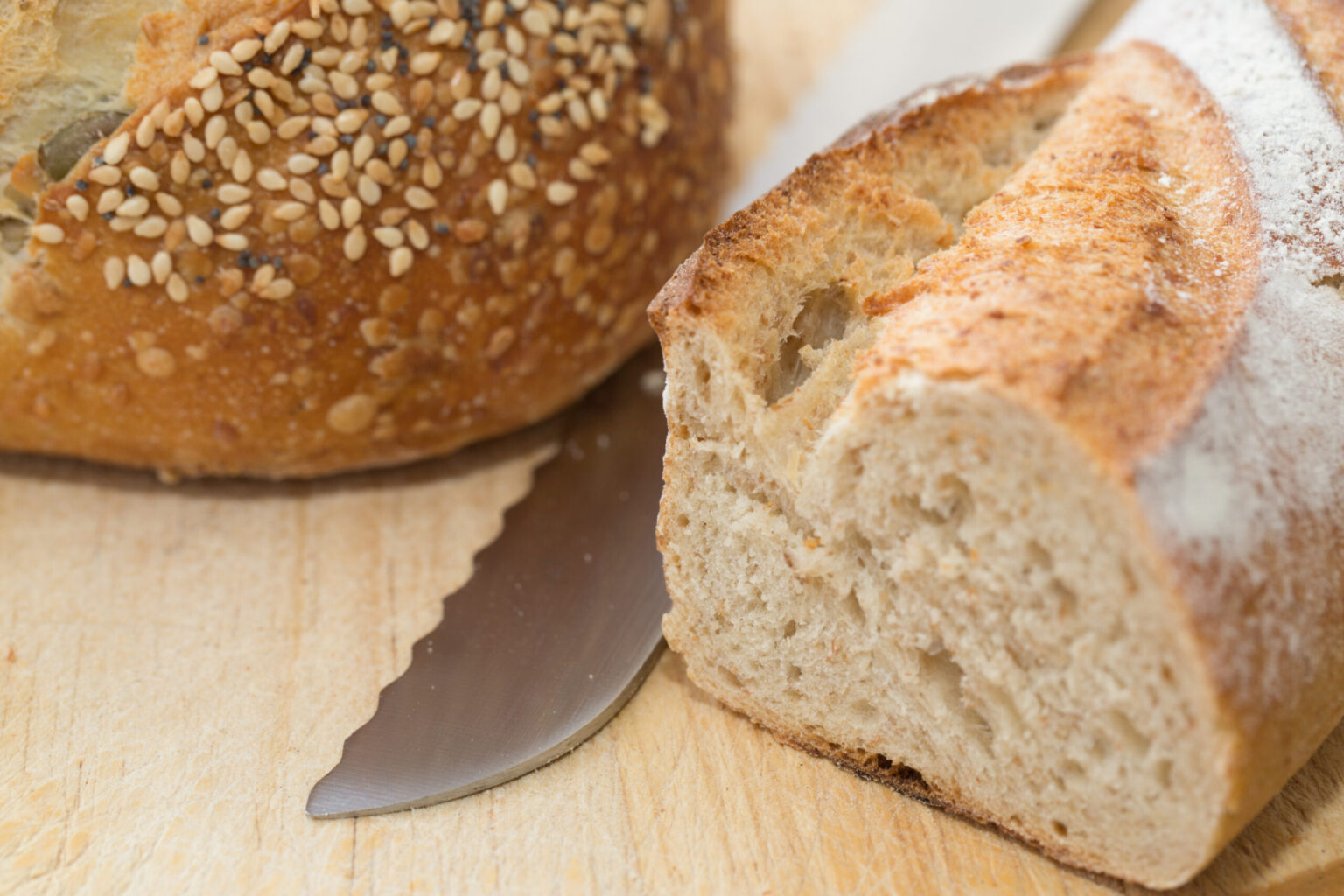Unlock the versatility of serrated knives! Explore these essential uses, from precise bread slicing to delicate pastries. What is a serrated knife used for? Let’s get into it.
Serrated Knives 101

Serrated knives have a toothy, saw-like edge, rather than a straight cutting edge like most knives. This makes them perfect for sawing through both tough and delicate foods.
Serrated blades aren’t limited to kitchen knives; you can find them on saws, as well as some scissors! But the reliable serrated knife is a must-have companion in any kitchen.
From cutting through crusty bread to easily slicing tomatoes, a serrated knife is the unsung hero of prep cooking. You might sometimes hear them humbly referred to as “bread knives.”
Slicing Crusty Bread
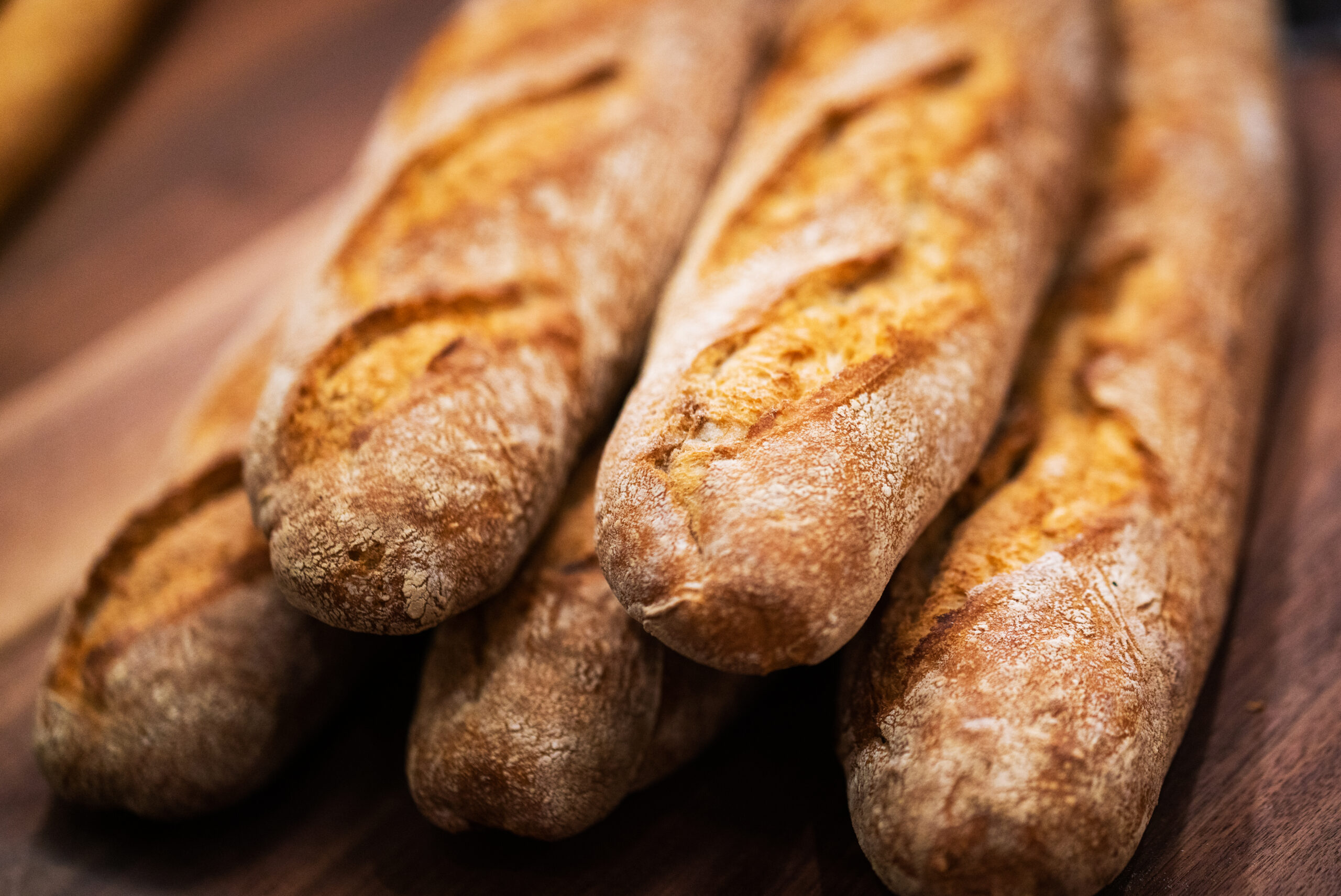
Indeed, serrated knives are indispensable when it comes to slicing through the tough exterior of a crusty baguette. Their toothed edges grip the crust, ensuring clean and easy cuts.
To achieve perfect slices, start by gently sawing through the crust using a back-and-forth motion. The serrations reduce friction, preventing the bread from compressing and maintaining its fluffy texture.
When handling crusty bread, apply minimal pressure and let the blade do the work. This technique, combined with the sharp teeth of the knife, guarantees a smooth bread-slicing experience.
Soft Breads and Bagels
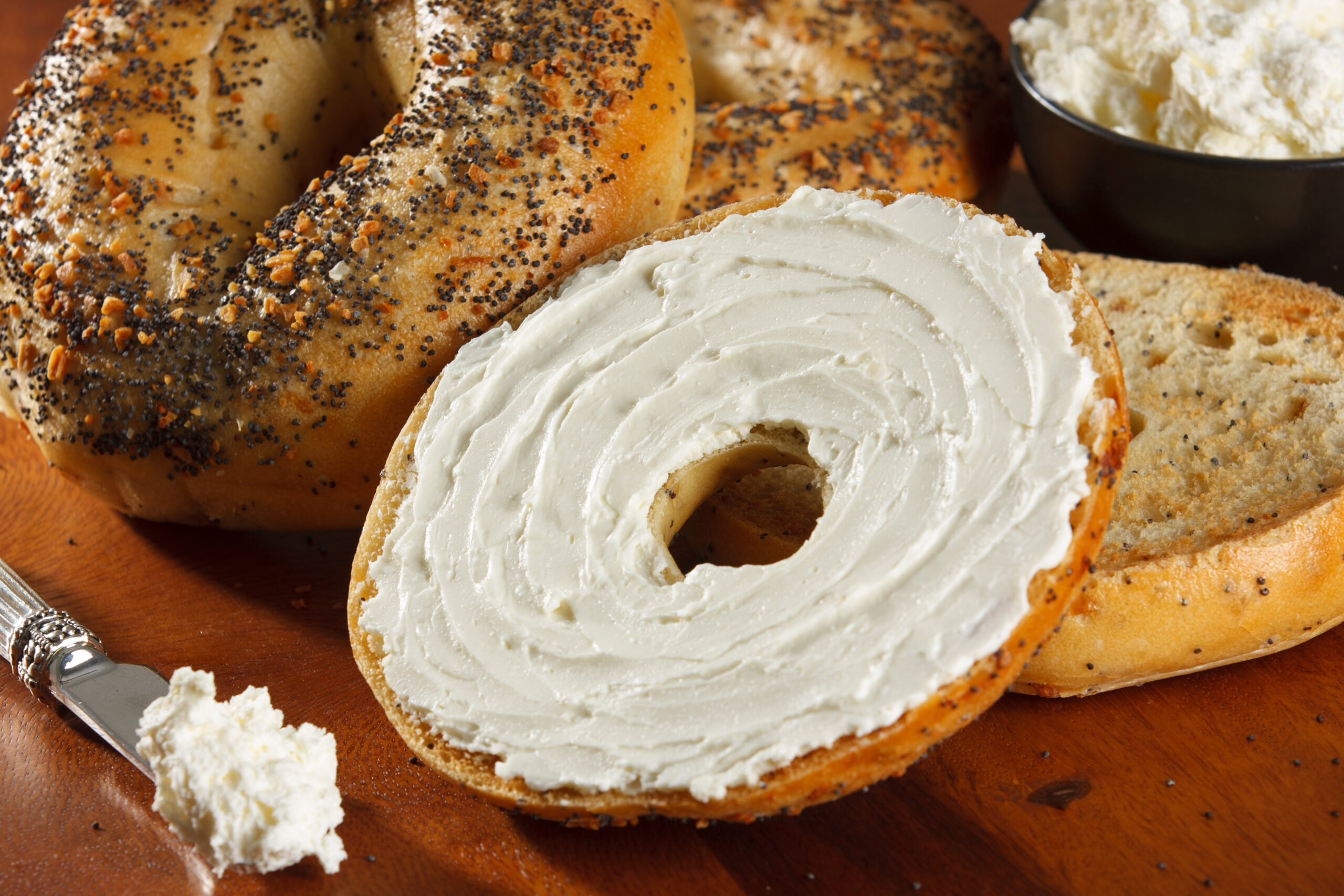
Soft breads and bagels require the same approach with a serrated knife. Gently sawing back and forth allows the serrations to glide through the softer texture without squishing or tearing.
A serrated knife is your best friend for slicing through the pillowy interior of soft breads. Its sharp teeth provide precision, ensuring each slice maintains the bread’s integrity.
When slicing bagels, the serrated knife’s design is key. Its teeth pierce through the tougher exterior, while the gentle sawing motion ensures a clean cut through the chewy interior.
Cakes and Pastries
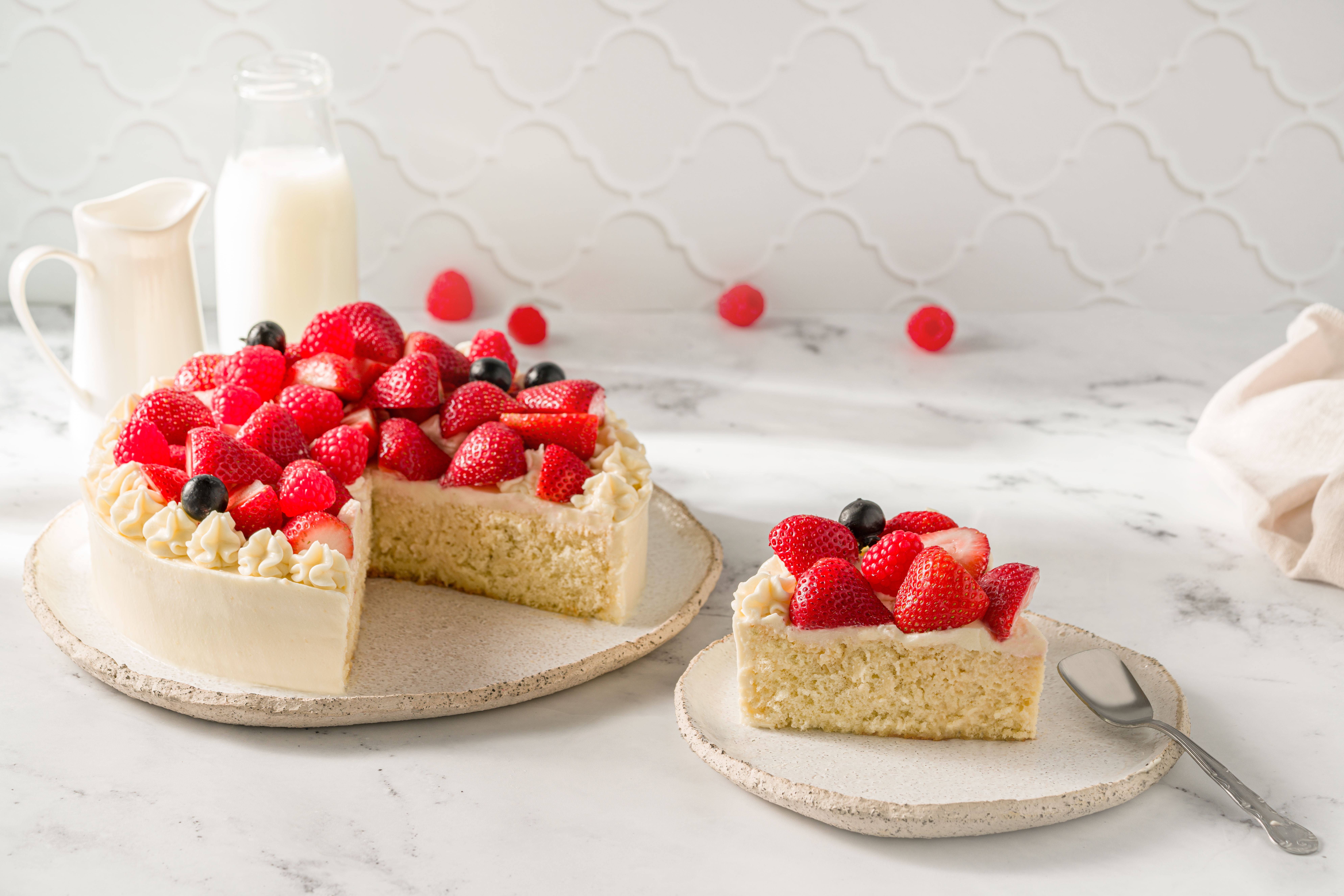
Serrated knives prove their versatility yet again with cakes and pastries. Their finely toothed edges delicately cut through layers, ensuring a clean and even slice without compromising structural integrity.
Again, use a gentle sawing motion with the serrated knife to glide through the soft layers. The serrations prevent crumbling, allowing for a smooth and visually appealing presentation.
Precision is key when using a serrated knife on delicate desserts. The sharp teeth effortlessly cut through flaky pastries without compressing them, preserving the intricate layers and textures.
Slicing Tomatoes
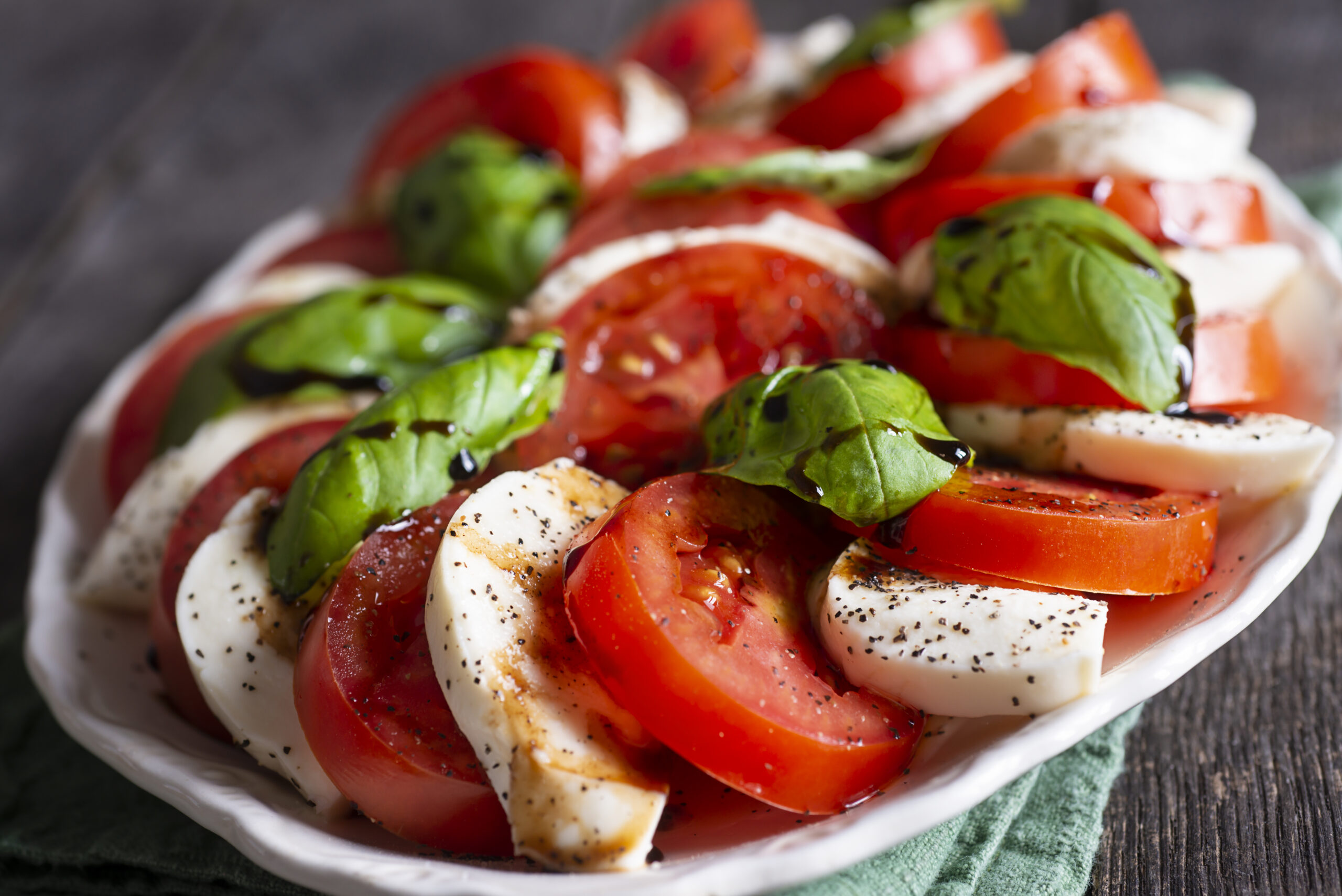
Serrated knives are a tomato’s ally in the kitchen! Their sharp teeth easily pierce through the skin, preventing the delicate fruit from getting crushed and maintaining its juicy goodness.
To get perfect tomato slices, use a gentle sawing motion with your serrated knife. The serrations grip the smooth surface, allowing you to cut through with precision.
When using a serrated knife on tomatoes, let your knife do the work. Minimal pressure is key to avoiding squashing the tomato and coming out with flawlessly cut slices.
Other Delicate Fruits and Vegetables
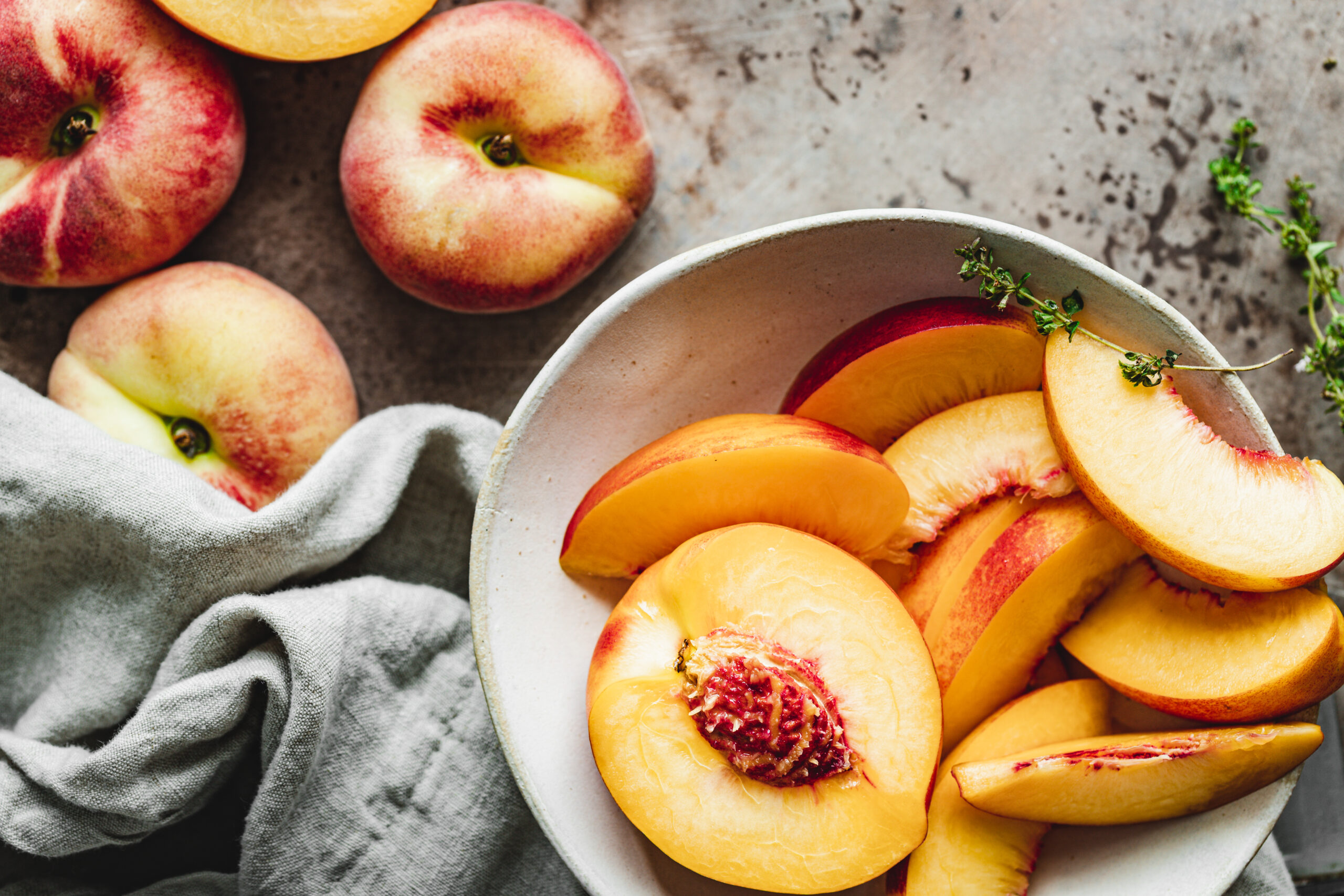
Tomatoes aren’t the only delicate fruit or veggie that finds a friend in the serrated knife. Other fruits and veggies like peaches and avocados also benefit!
Begin by washing and patting them dry, ensuring a clean canvas for precise cuts. Then, use a knife with a finely serrated edge, ensuring you get clean slices.
Allow the serrations of the knife to navigate the delicate cuts without squishing your subject. Practice makes perfect, so hone your skills and elevate your culinary expertise!
Pineapple and Melons
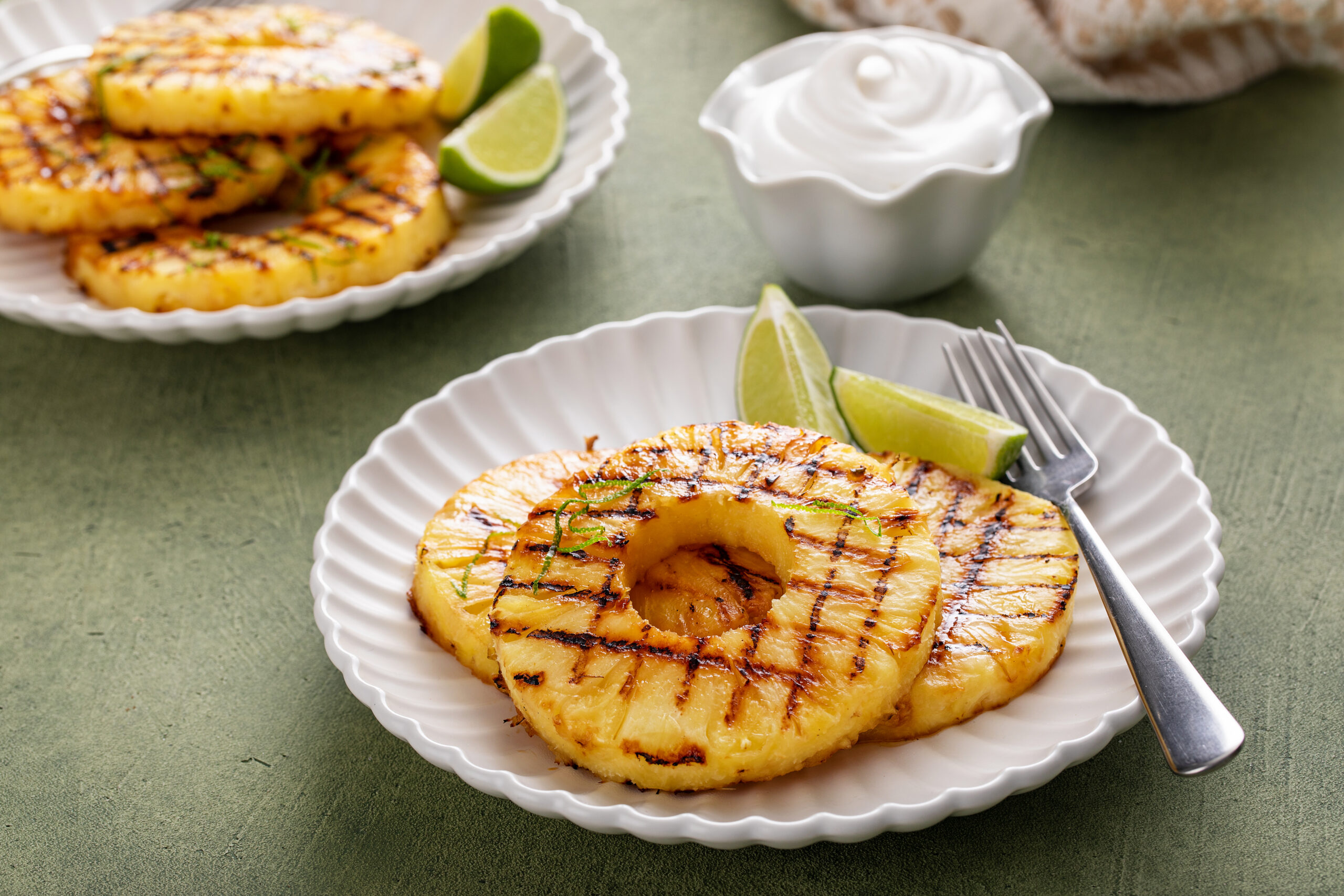
Tougher fruits experience a glow-up when sliced with a serrated knife, too! The serrated edge effortlessly glides through the tough exterior of pineapples and melons alike.
For melons, let the serrations work their magic by easily puncturing and slicing the thick rind. Use a gentle sawing motion to achieve clean and even slices.
Serrated knives offer ease in every cut and ensure a delightful prepping experience. Add this technique to your kitchen repertoire for flawless results with these refreshing fruits!
Cabbage and Lettuce
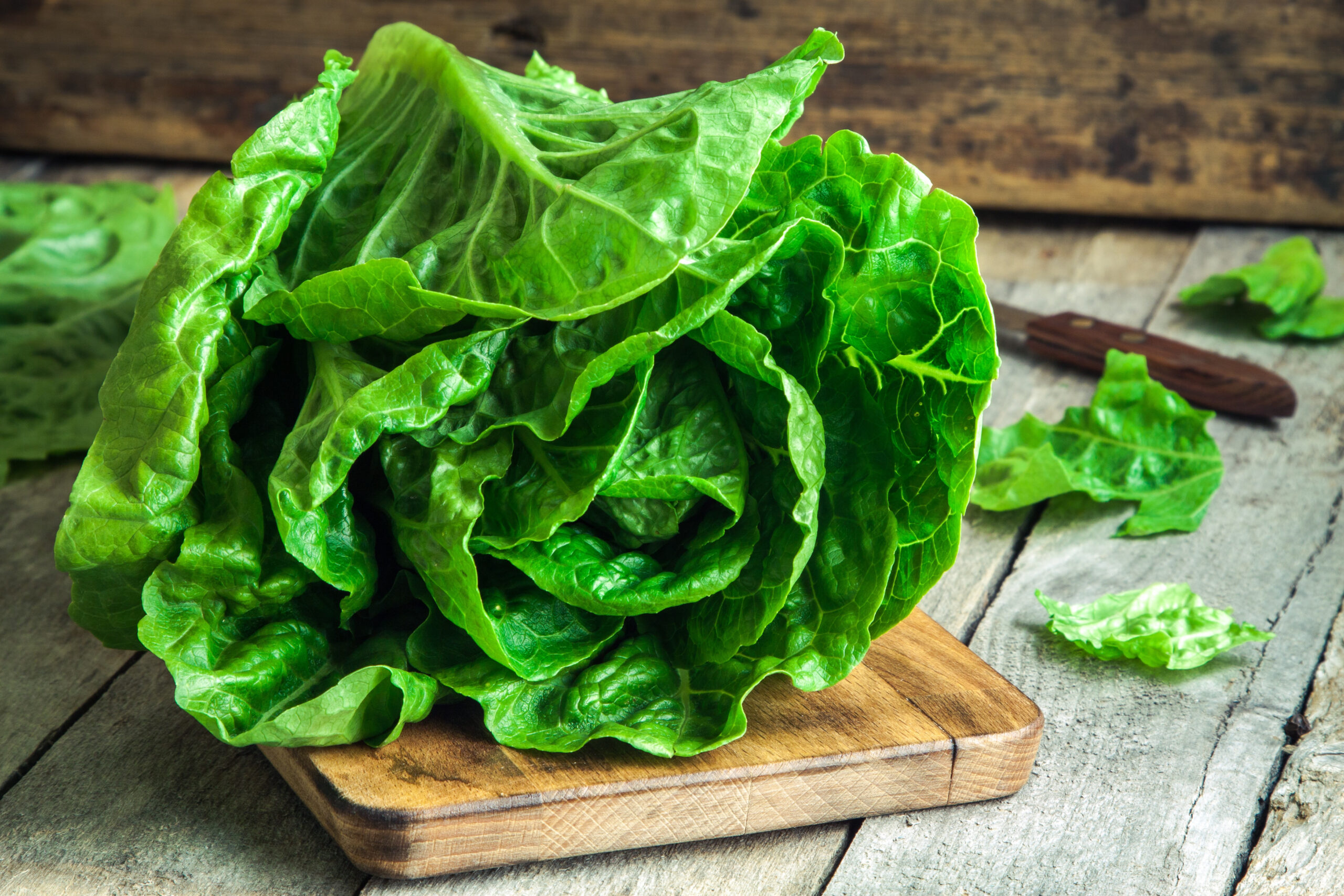
Elevate your salad game using a serrated knife to handle cabbage and lettuce! The serrated edge effortlessly cuts through the dense layers of cabbage, ensuring even and precise shredding.
When tackling lettuce, choose a finely serrated knife to avoid bruising the delicate leaves. Using a gentle sawing motion with a serrated knife helps preserve the lettuce’s crispness and freshness.
With tougher cabbage, a serrated knife can allow you to divvy up the head into edible shreds. Upgrade your salad prep with this serrated knife technique!
Artichokes
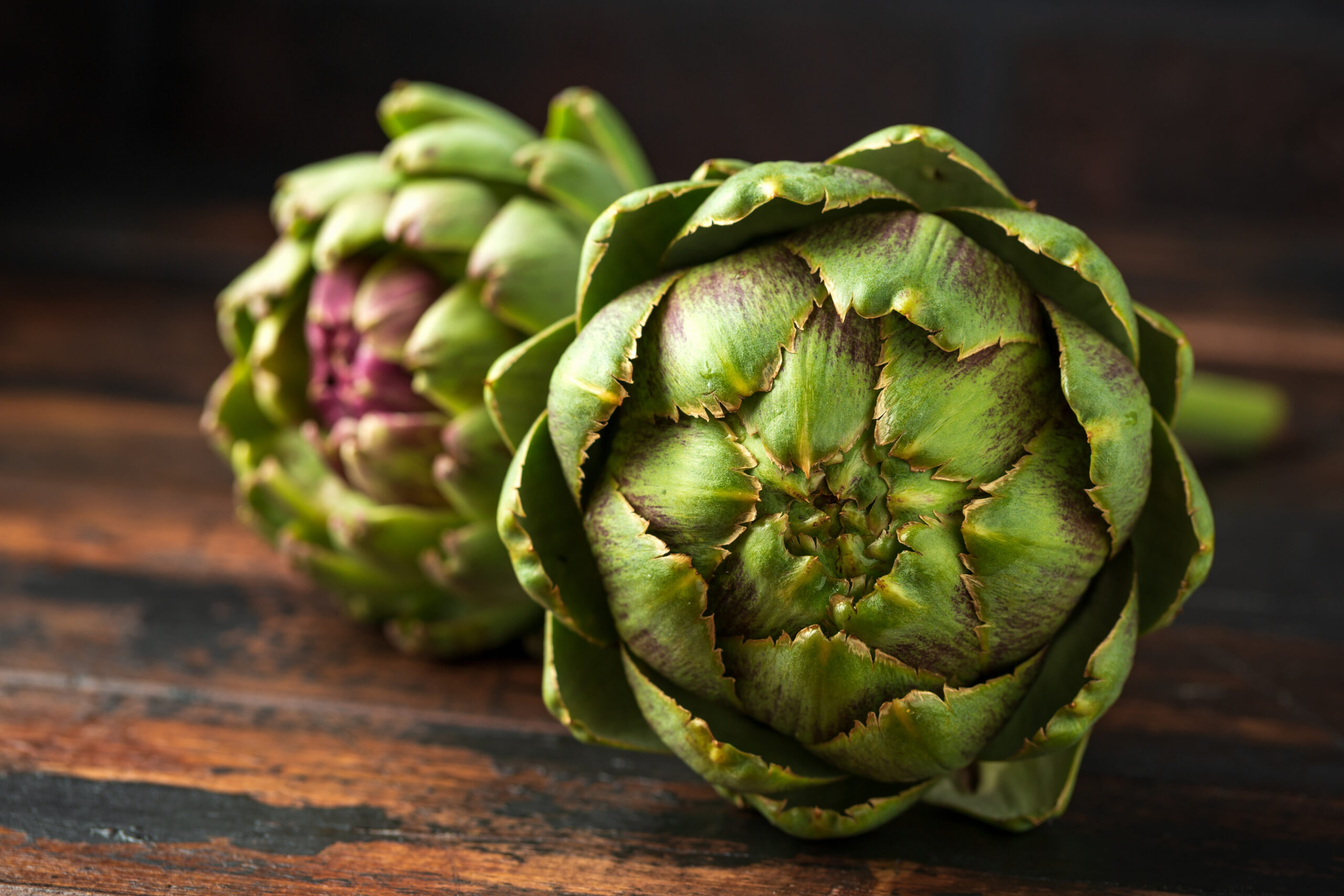
Artichokes are notoriously tough veggies to cut and prep, often leading to frustration in the kitchen. Serrated knives come to the rescue yet again to change all that.
Serrated knives are key in prepping artichokes. You can use a serrated knife to expertly trim the top of the artichoke, leaving you with a ready-to-cook choke.
Rather than spending precious time struggling with a smooth-edged knife trying to tackle your artichoke prep, choose a serrated blade. You can thank us later!
Chocolate Shaving
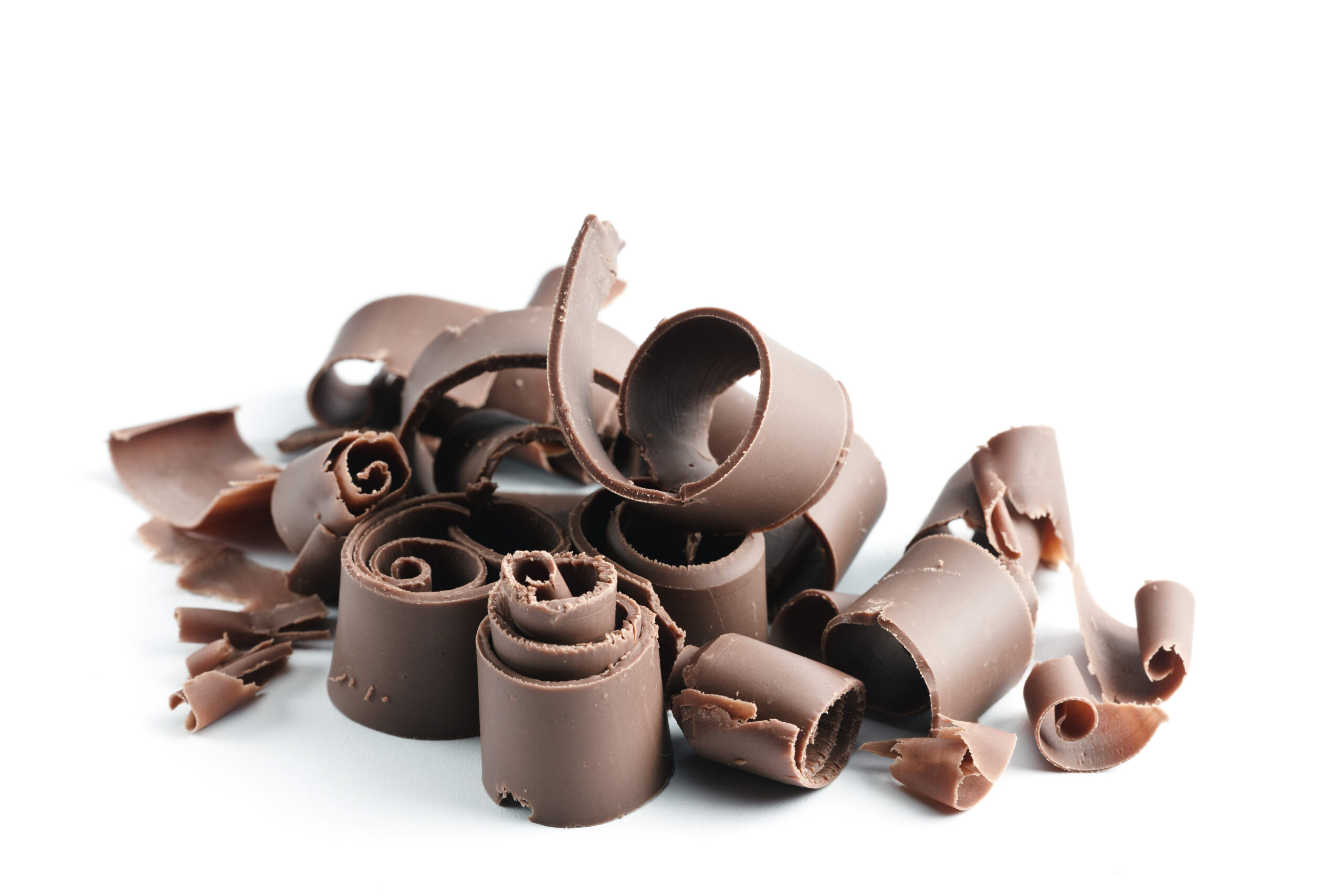
When it comes to creating delicate chocolate shavings, a serrated knife may just prove to be your secret weapon. Opt for a serrated edge to effortlessly glide through the chocolate.
Hold the chocolate at a slight angle and gently saw with the serrated knife to achieve paper-thin shavings. The sharp teeth of the serrations make this process smooth as butter.
Shaving chocolate for adorning your desserts becomes an art form with the precision of a serrated knife. Elevate your dessert presentations by mastering this artistic chocolate-shaving technique!
Zesting Citrus
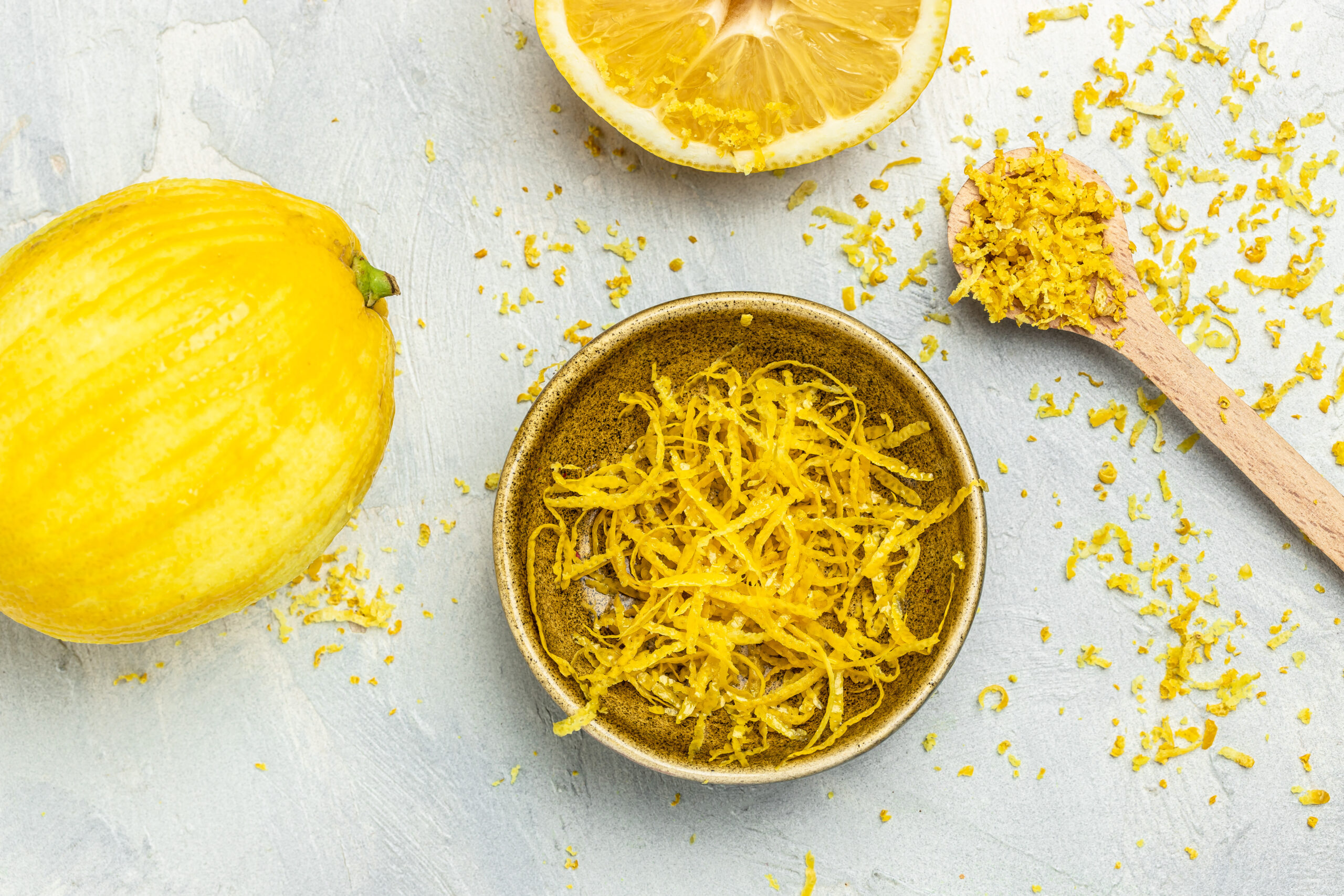
For the perfect citrus zest, turn to a serrated knife. The sharp teeth make quick work of the citrus peel, resulting in flavorful zest without reaching the bitter pith.
Hold the citrus securely and gently saw the serrated knife across the surface, creating fine zest strips. The serrated edge ensures you capture the aromatic oils, enhancing the taste.
Incorporating a serrated knife into your citrus zest routine guarantees a seamless and efficient process. Elevate your culinary creations with this simple yet effective technique.
Carving a Turkey
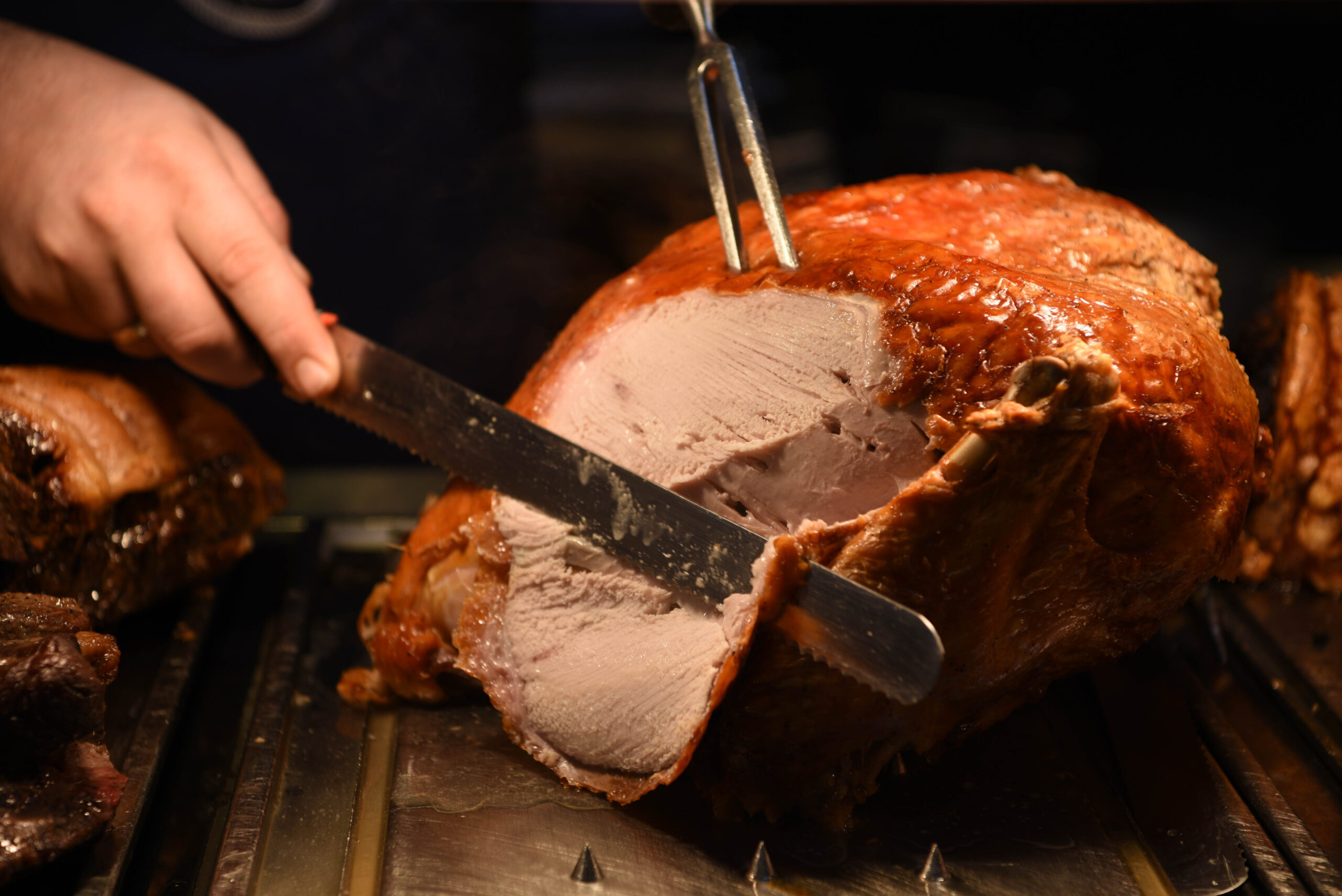
Achieve turkey carving mastery with the precision of a serrated knife! Opt for a long, serrated blade to effortlessly glide through the meat, ensuring clean and uniform slices.
Begin by cutting along the natural contours of the turkey. The sharp teeth of the knife make it easy to handle the crispy skin without tearing.
Choosing a serrated knife for carving ensures that each serving has a perfect blend of tenderness and presentation. Elevate your holiday feasts and special occasions with this trick!
Other Meats, Roasts, and Poultry
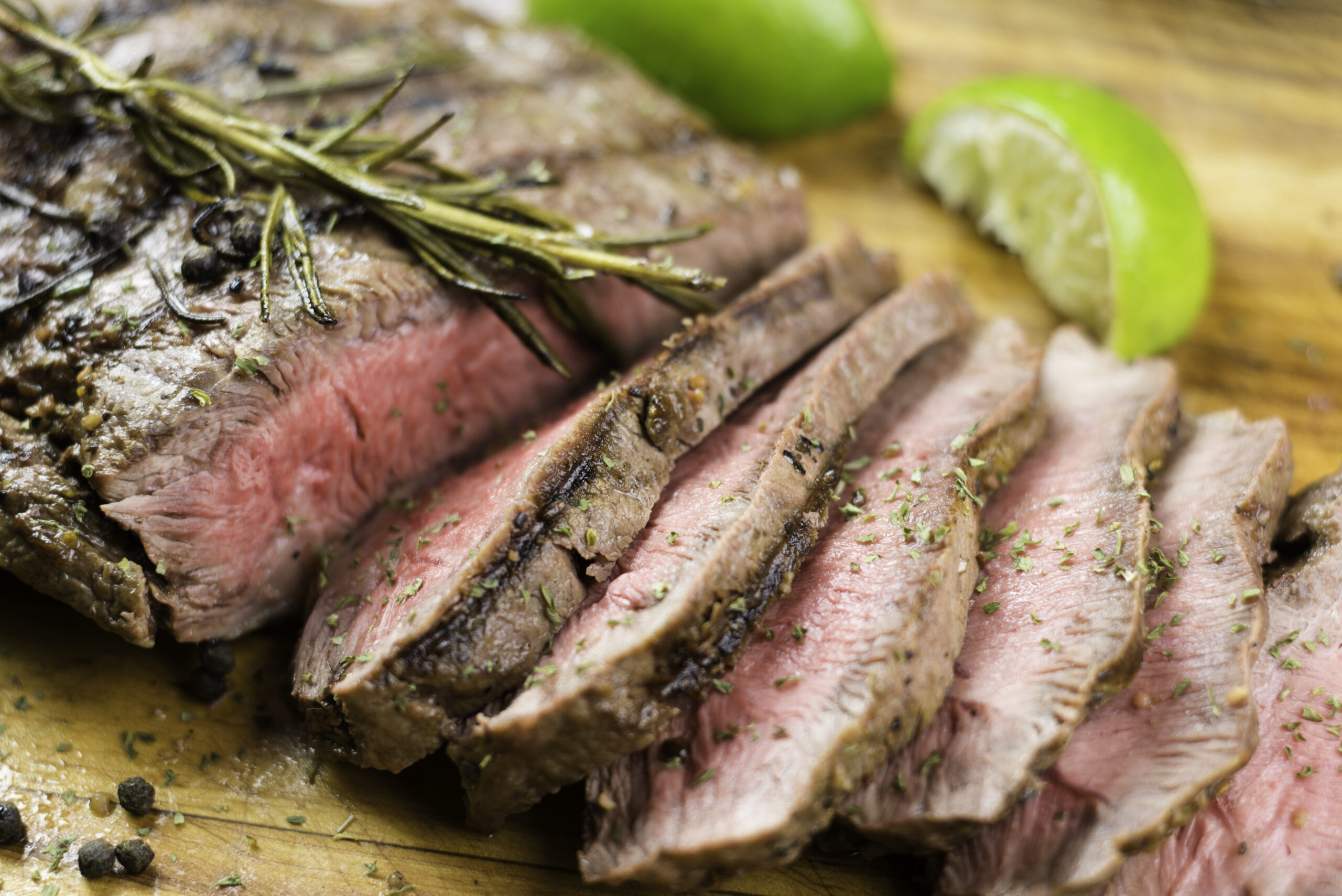
When answering the question, “What is a serrated knife used for,” turkey isn’t the only meat or poultry that benefits. You can also apply its versatility to other meats!
When dealing with poultry, especially crispy-skinned birds, a serrated knife proves invaluable. The sawing motion allows you to navigate through the skin while maintaining the integrity of the succulent meat.
For various cuts of meat, tender or more robust, the serrated knife’s precision offers a clean and efficient slicing experience. Elevate your meat preparation game by incorporating this versatile tool!
Hard and Soft Cheeses
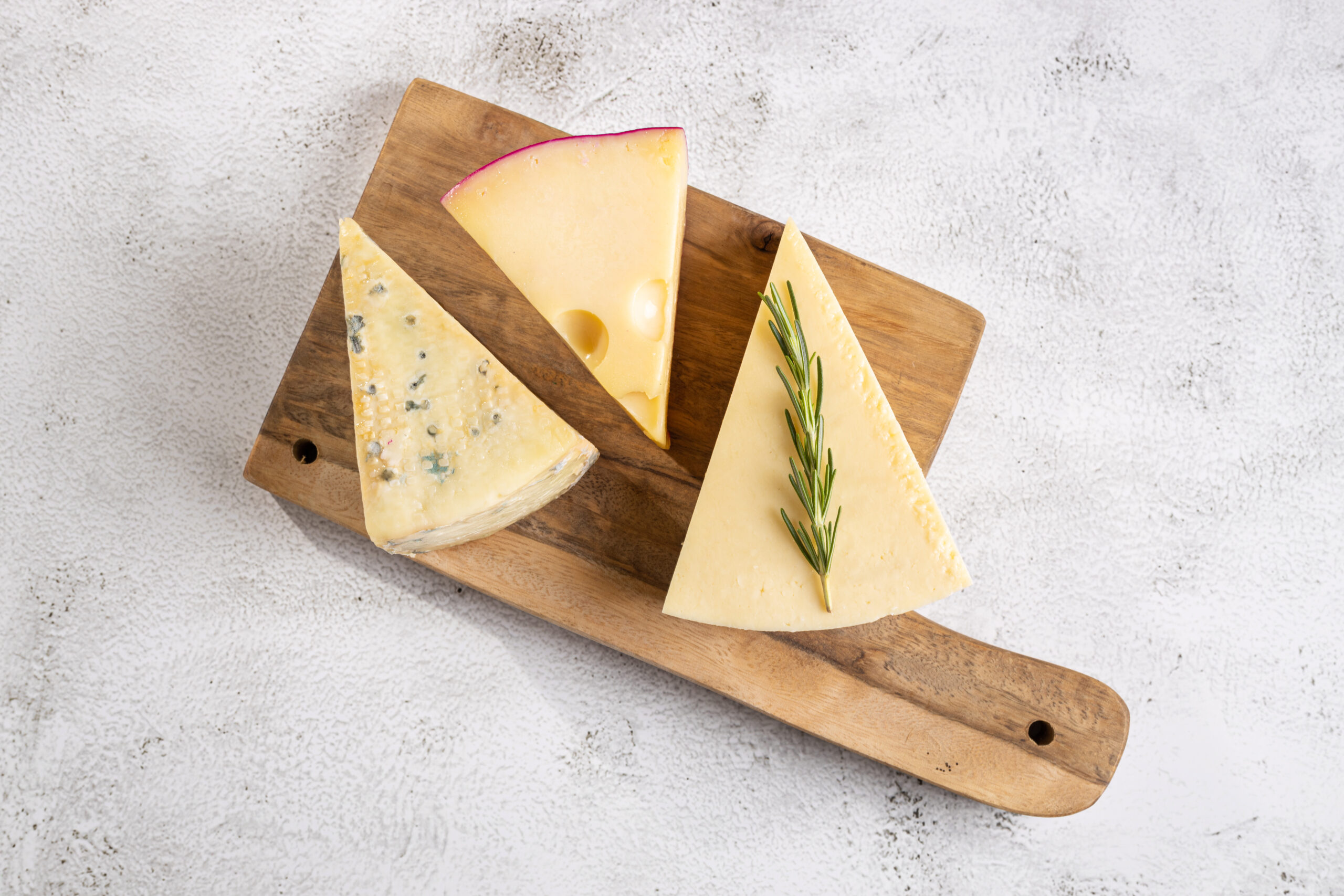
Navigate the magical world of cheeses with the versatility of a serrated knife. Serrated blades are perfect for divvying up both hard and soft cheese varieties.
When dealing with soft cheeses like brie or camembert, a serrated knife becomes a gentle yet effective choice. The serrated edge helps to glide through the creamy texture without sticking.
Whether you’re assembling a cheese board or incorporating cheese into your dishes, mastering the use of a serrated knife enhances the experience. Elevate your culinary craftsmanship with this tip!
Fresh Herbs

Harness the delicate touch of a serrated knife when working with fresh herbs! The sharp teeth of the serrated edge provide a gentle cutting motion, retaining the herbs’ flavors.
For leafy herbs like basil or mint, employ a swift sawing motion to create a chiffonade. The serrated knife allows for clean, fine cuts, preserving the herbs’ essential oils.
Incorporating a serrated knife into your herb preparation routine elevates your culinary game. Handle fresh herbs with the finesse they deserve by using a serrated knife!
Filleting a Fish

Filleting a fish can be quick and easy with a serrated knife. Choose a flexible serrated blade to effortlessly glide through the fish’s flesh, minimizing waste and maximizing yield.
Start by making an incision behind the fish’s gills, guiding the serrated knife along the spine. The sharp teeth of the blade delicately separate the fillet from the bones.
For precise skin removal, utilize the serrated edge to navigate between the skin and the fillet. The result is a perfectly filleted fish, showcasing the benefits of a serrated knife.
Shelling and Shucking Shellfish
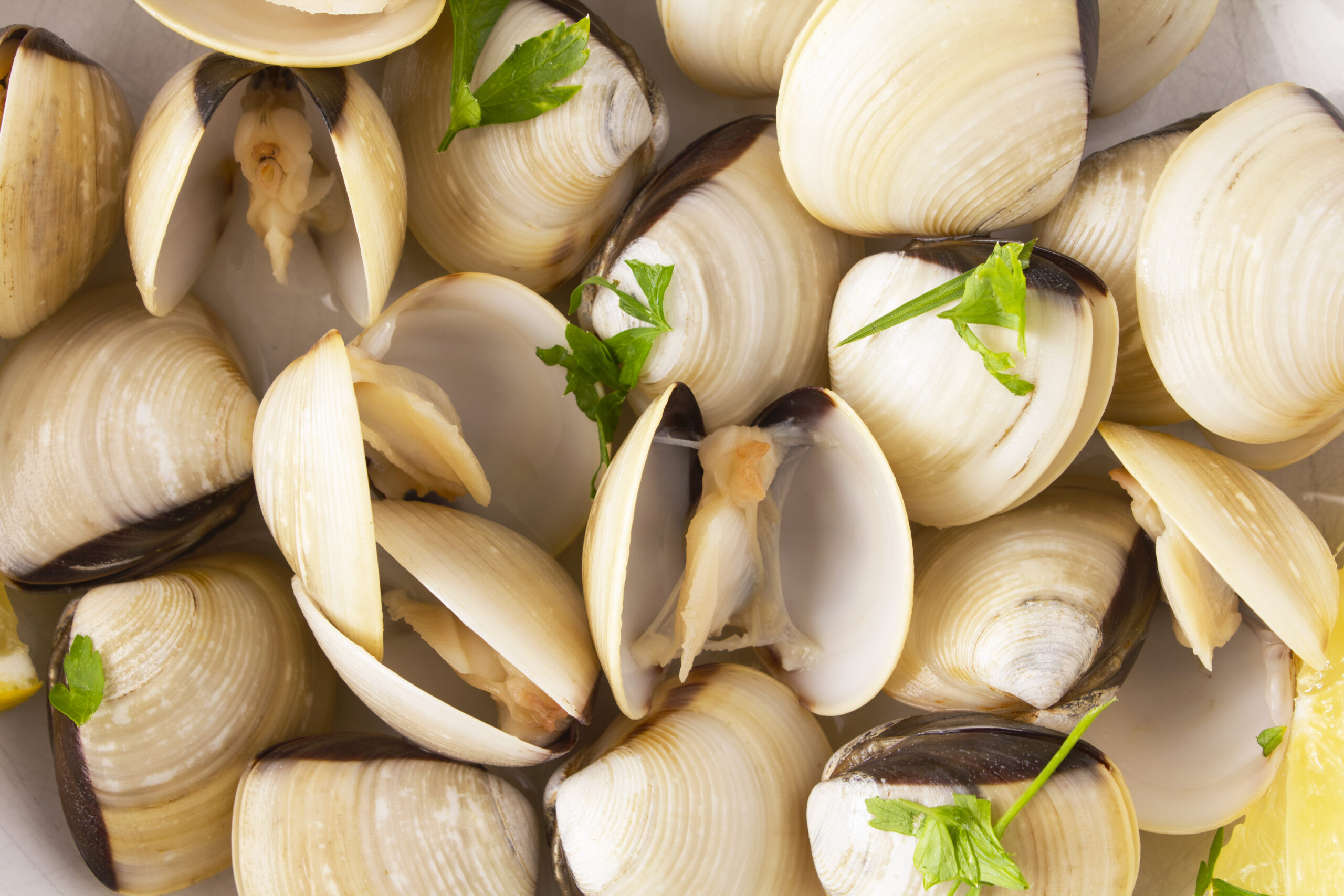
Unlock the essence of shellfish with the dexterity of a serrated knife! Tackling crustaceans like crabs or lobsters becomes a breeze as the serrated edge navigates shells with ease.
Begin by locating the joints. Use the serrated knife to carefully crack them open. The serrations provide the grip necessary to extract the meat without damaging its delicate texture.
Whether peeling shrimp, shelling crabs, or shucking oysters, the serrated knife proves invaluable. Its precise cuts and unique grip ensure you can utilize every bit of shellfishy goodness.
Making Sandwiches
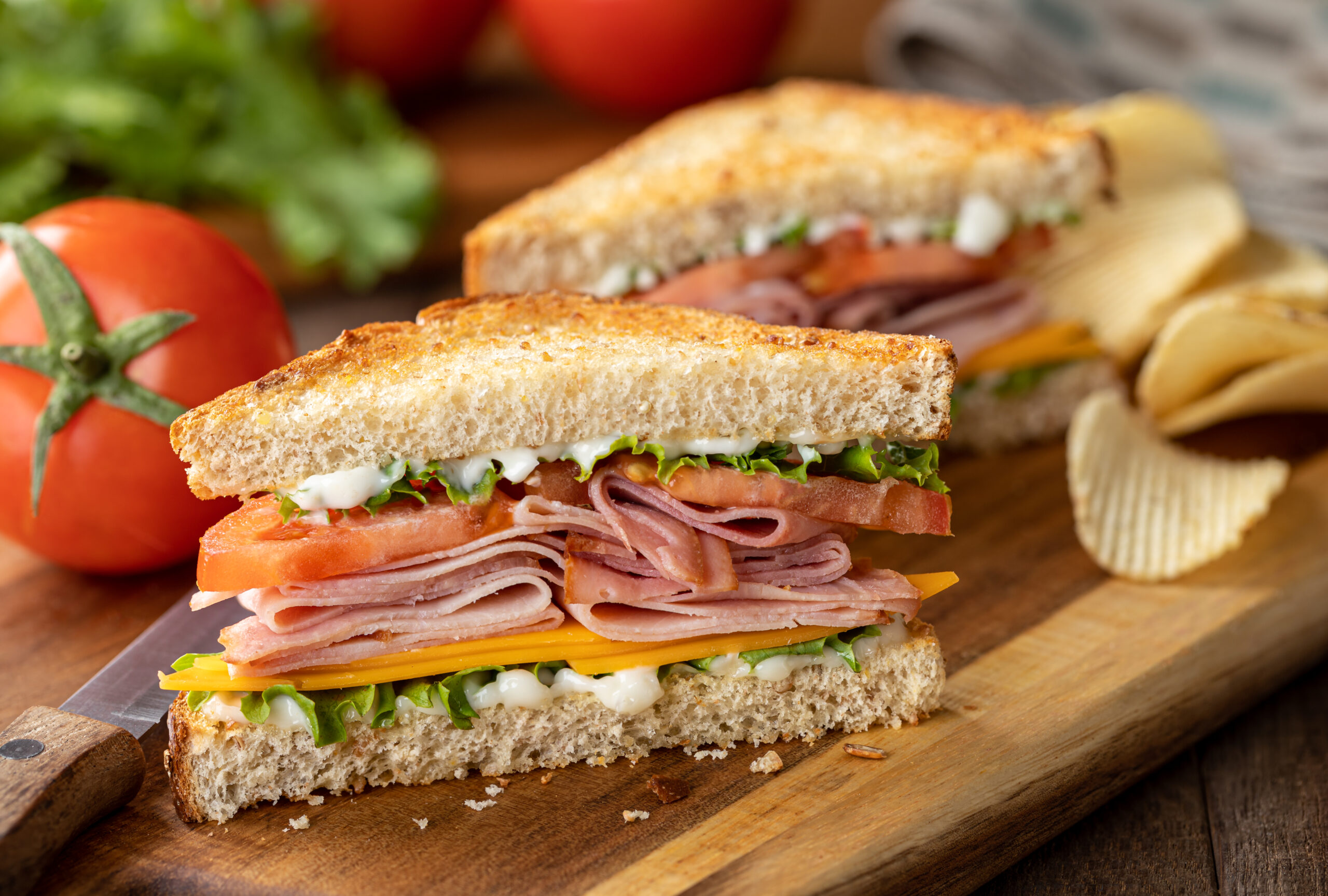
Take your sandwich-making game to the next level with the power of a serrated knife. The sharp serrations effortlessly slice through various bread types, ensuring clean cuts without crushing.
Choose a serrated knife with a longer blade for a smooth, sawing motion through crusty bread, achieving uniform slices. Perfect for a classic BLT or a gourmet panini.
For layered sandwiches, a serrated edge is essential in creating neat and appetizing cuts. Incorporate this versatile tool into your kitchen routine for perfect sandwiches that marry taste with presentation.
Cutting Frozen Foods
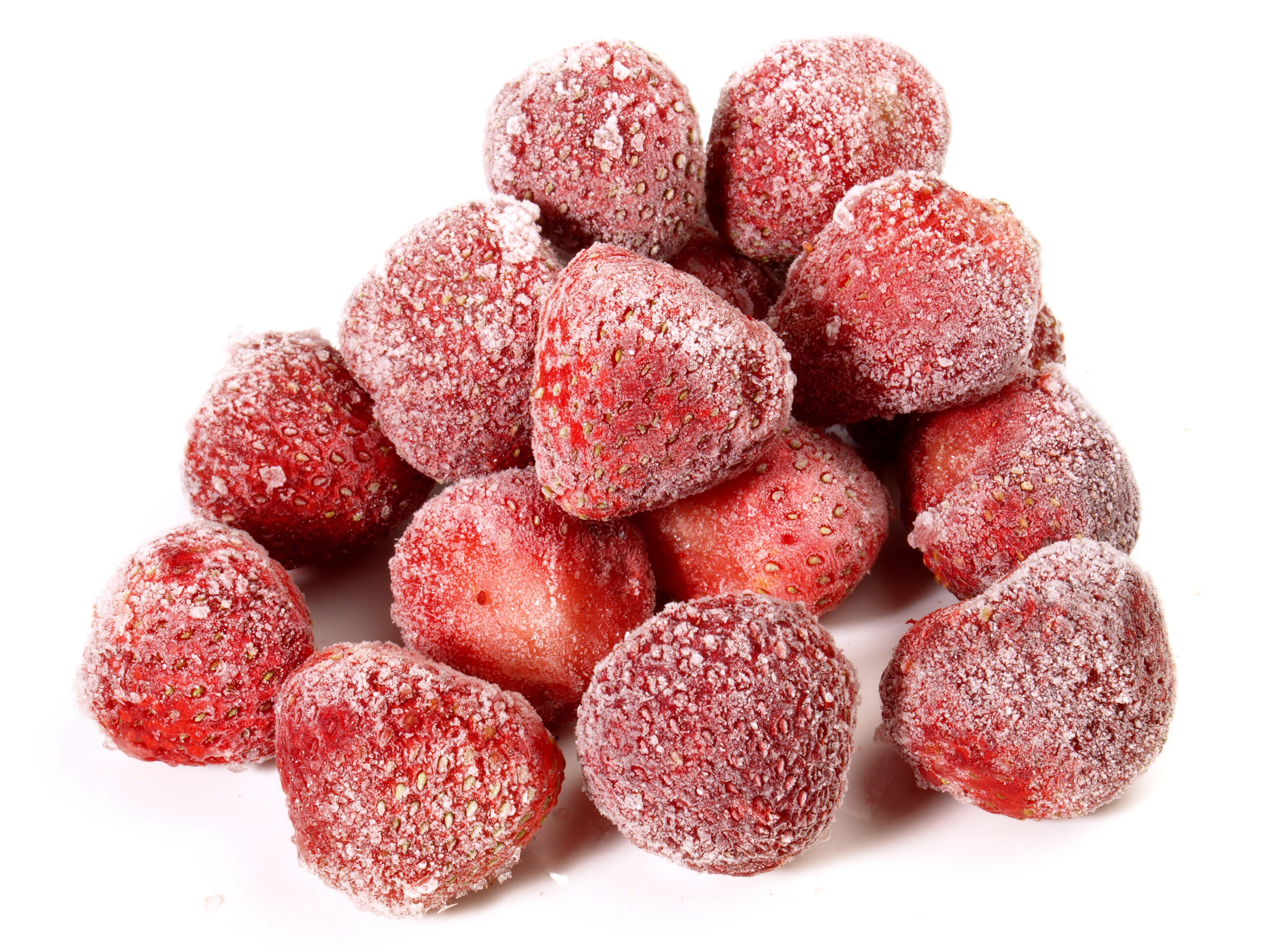
Conquer the cutting of frozen foods with the toothy efficiency of a serrated knife. The sharp teeth of the serrated edge penetrate frozen surfaces, providing a clean and controlled cut.
Choose a serrated knife with a sturdy blade for frozen meats, vegetables, or desserts. The sawing motion allows the serrations to break through icy textures, ensuring your cuts are precise.
Whether you’re prepping ingredients for cooking or portioning out frozen treats, a serrated knife is an amazing tool for coping with the rigidity of frozen foods. Game-changing!
Pumpkin Carving

When Halloween comes around, just reach for your serrated kitchen knife to create expertly cut Jack-o’-lanterns. This tool can become your artistic wand, bringing your pumpkin masterpiece to life!
Choose a serrated knife with a pointed tip for intricate designs. The sharp serrations effortlessly carve through the pumpkin’s flesh to create spooky faces, intricate patterns, or cheerful expressions.
As you carve, let your imagination run wild! The serrated knife becomes your partner in pumpkin artistry, turning a simple gourd into a festive work of Halloween delight.
Tough-Skinned Vegetables
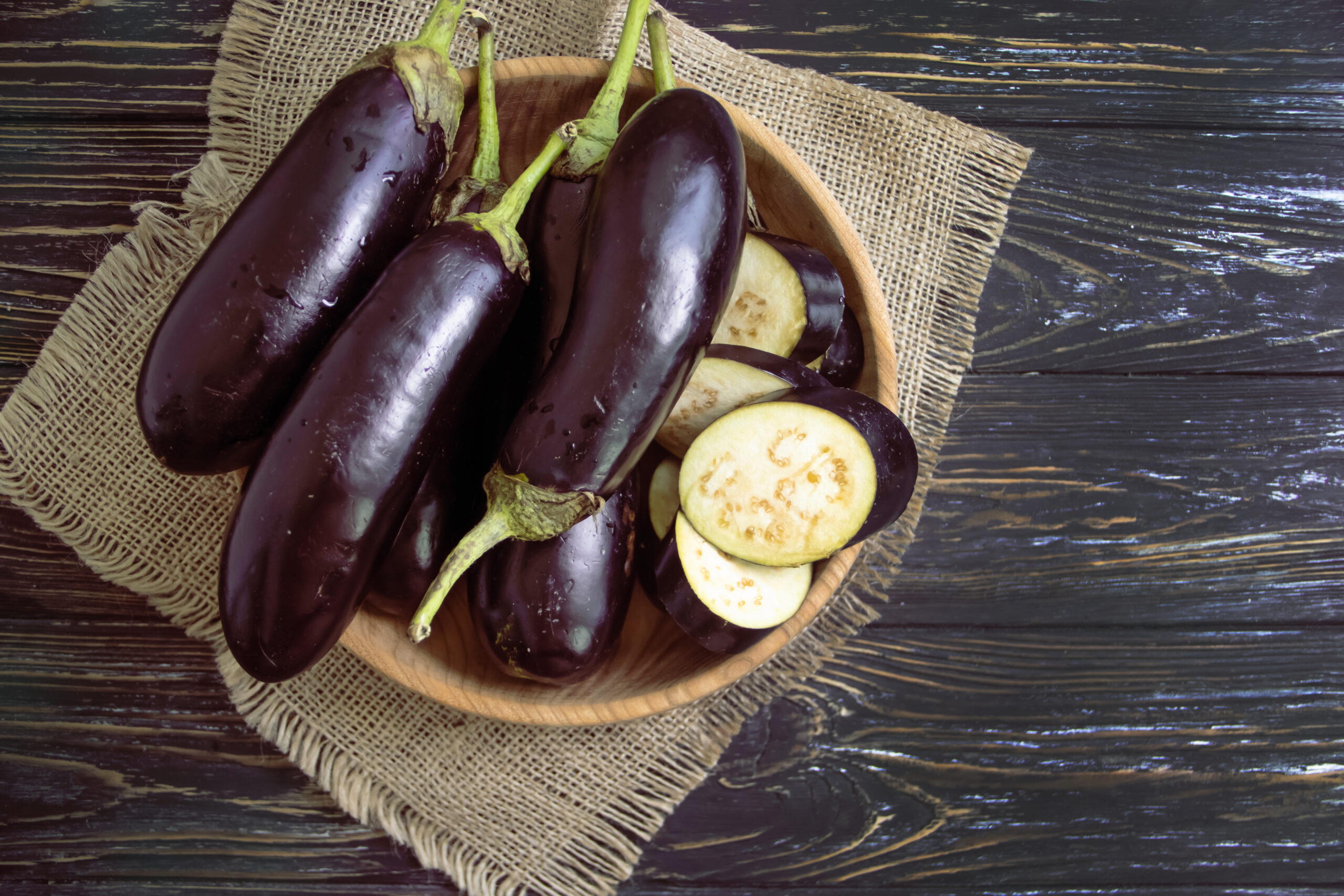
A serrated knife is your best friend in the kitchen when it comes to recipes involving tough-skinned vegetables. This includes veggies like butternut squash and eggplant.
Choose a serrated knife with a sturdy handle, providing the grip needed for these hardy veggies. The sawing motion of the serrated edge ensures clean and controlled cuts.
From preparing hearty stews to crafting roasted vegetable medleys, the serrated knife proves indispensable in handling the robust textures of tough-skinned vegetables. Let this culinary companion be your ally!
Unique Bread-Slicing Techniques
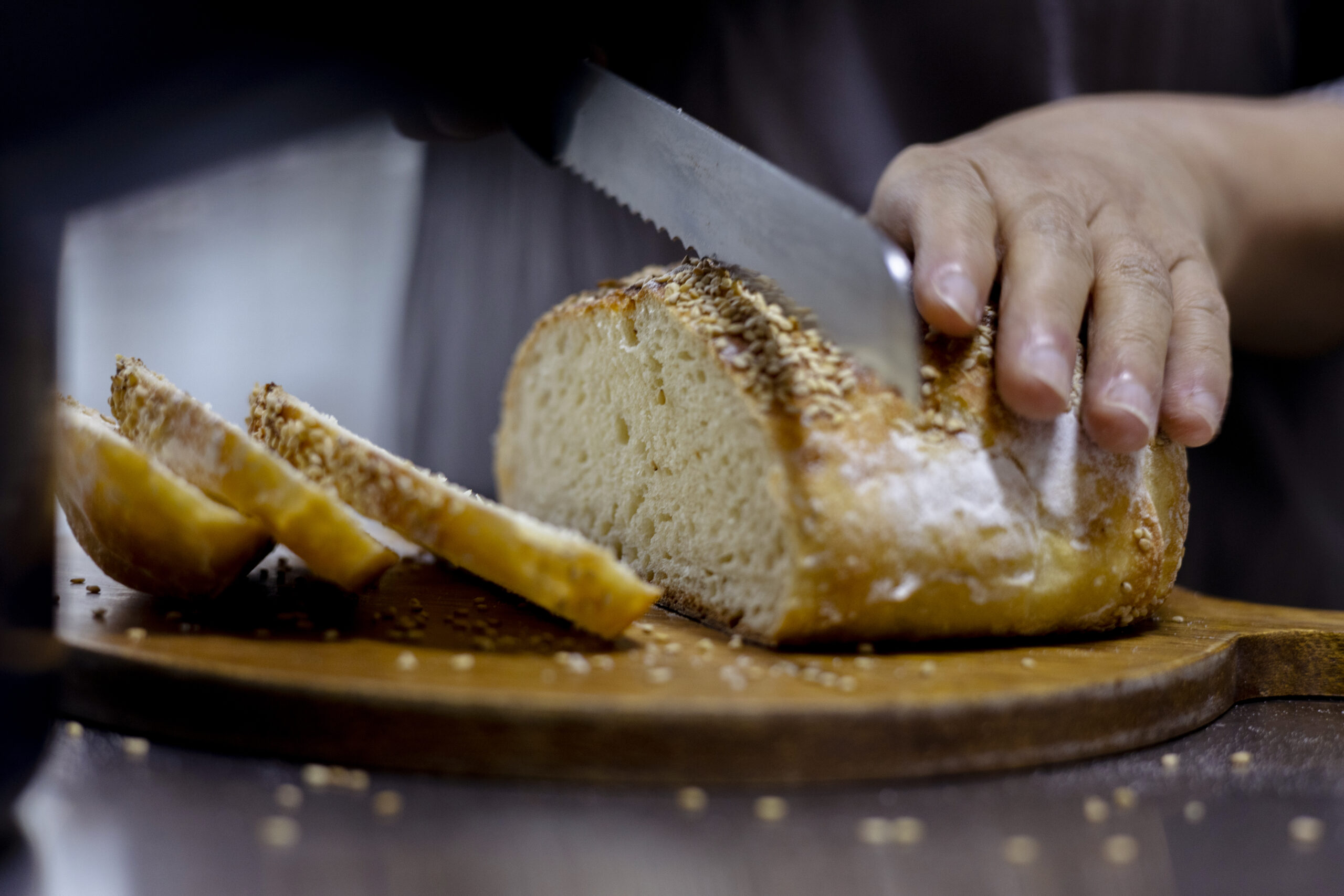
Slicing bread doesn’t have to be humdrum when you incorporate a good serrated knife into your prepping routine. There are several unique bread-slicing techniques you can try.
For example, you can unleash your inner artist by cutting your bread diagonally. Hold the serrated knife at a slight angle and create beautiful diagonal slices.
You can also use a serrated knife with a cutting guide for slicing bread. Place the bread inside the guide, and use your serrated knife to get perfectly even slices.
Bagel-Slicing Technique
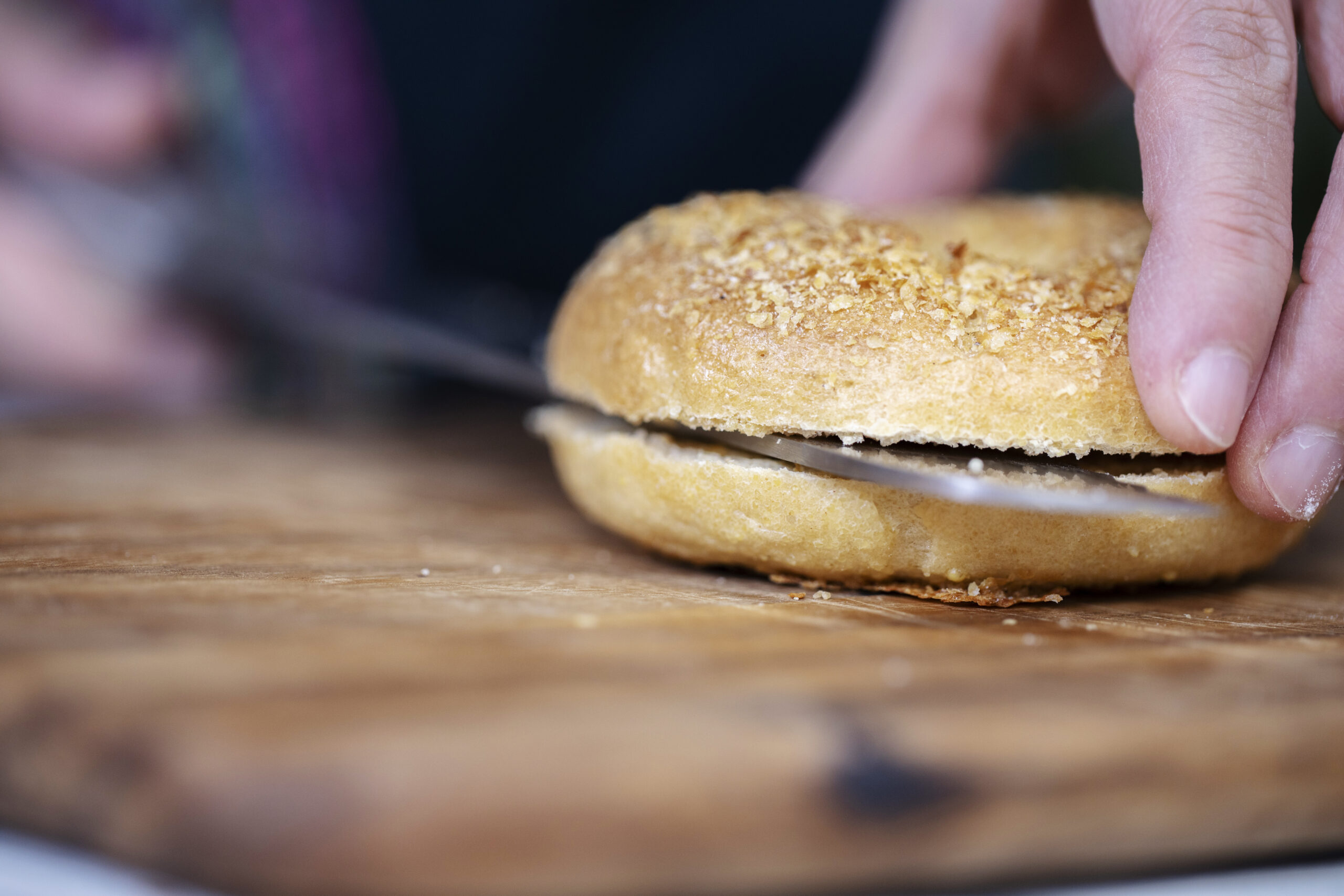
Did you know that bagel-slicing injuries are actually a serious problem? Using a serrated knife the right way is essential to getting a clean, even cut and preserving your fingers.
Getting the best bagel cut with a serrated knife involves two steps. First, place your bagel horizontally on the board, and position the knife parallel to the surface.
Carefully cut through halfway, and then stand the bagel up on its side. Now gently cut down to the cutting board to finish cutting your bagel.
History of Serrated Knives
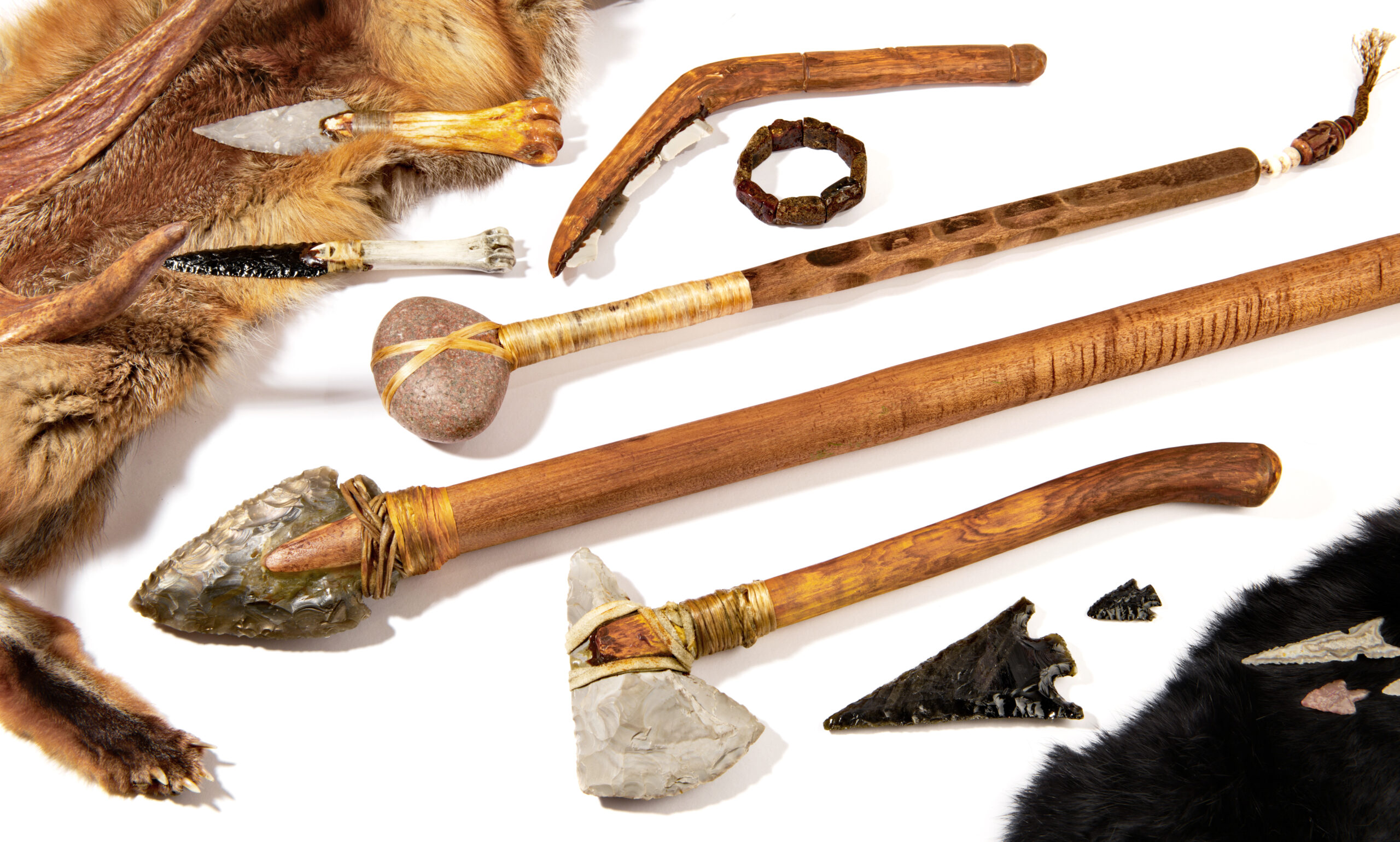
It’s hard to nail down exactly when the first serrated knife came into being. But we do know that the earliest serrated blades are ancient, dating back to 500,000 BC!
Modern-day serrated kitchen knives are a relatively newer invention. Some sources state that they were created in Syracuse, New York, while others believe they appeared at the Chicago World’s Fair.
Whoever first created the serrated kitchen knife, it’s clear that its modern-day form first appeared in the 1900s.
What’s the Purpose of a Serrated Knife?
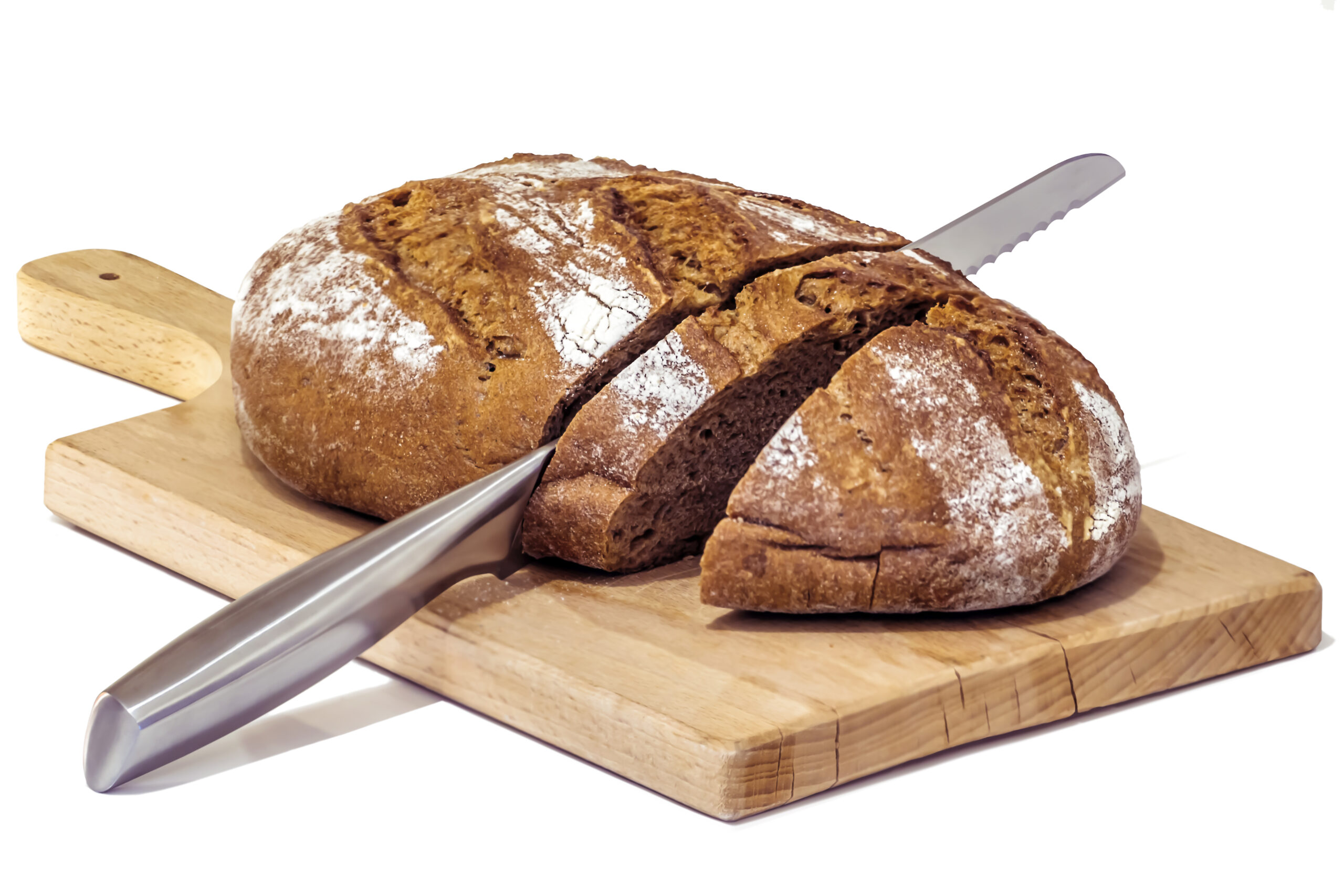
We can’t answer the question, “What is a serrated knife used for?” without addressing the primary purpose of these blades. So why do we even have serrated knives?
Serrated knives have sharp teeth that puncture the surface of whatever you’re cutting to create a cutting experience with less effort. This leads to easier slicing and cleaner cuts.
Consider this: would you try to saw through a tree with a sword? While you probably could in theory, it would also take you the rest of your life.
How Does a Serrated Knife Work?
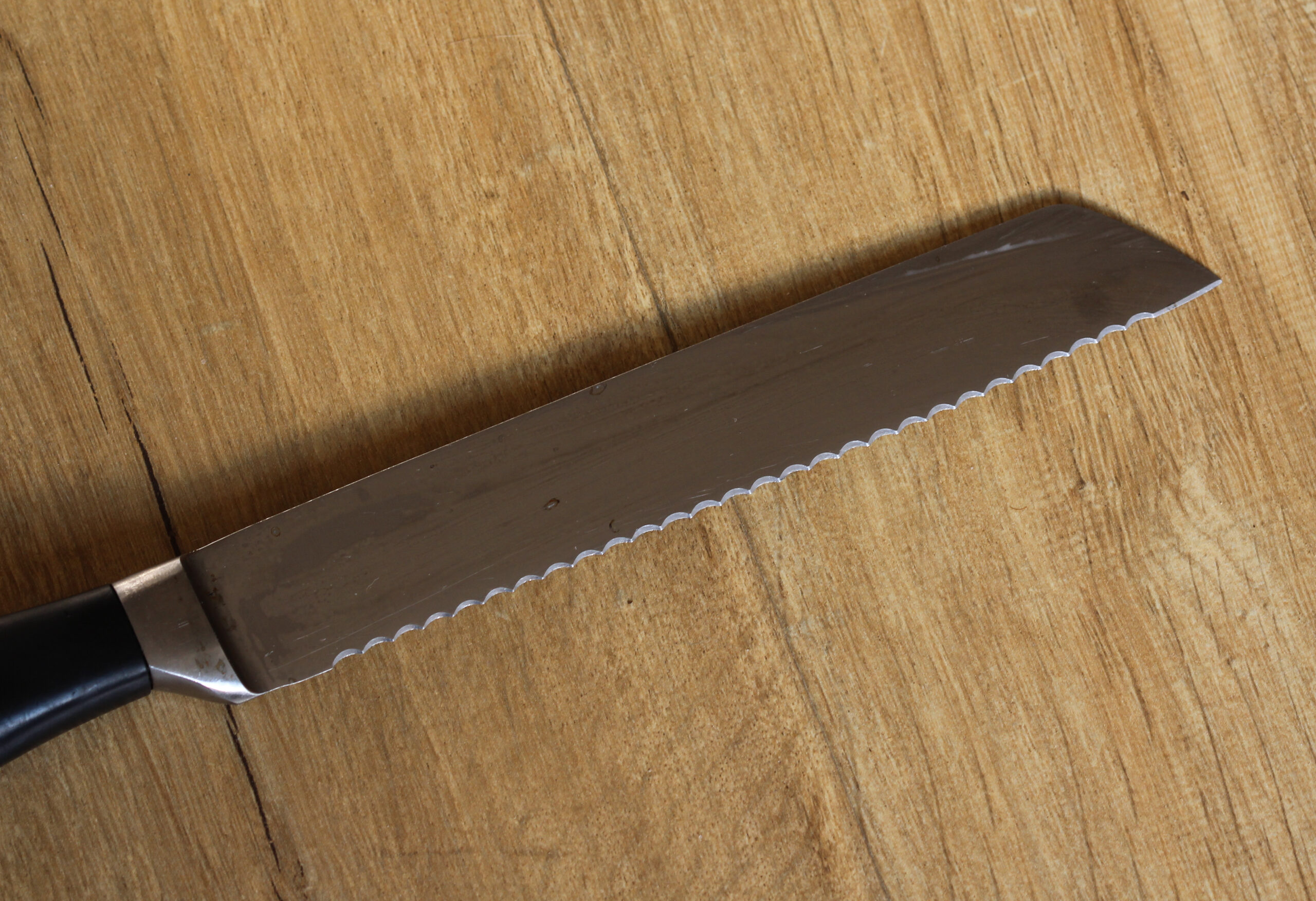
Serrated knives work by puncturing through the outer skin of anything you’re cutting. This could be bread, fruit, meat, or anything else you’re cutting while prepping food.
Scientifically speaking, the serrated edge has less contact area than a smooth blade edge. This means that the pressure at each point of contact is higher.
The points of contact of your serrated knife are also at a sharper angle, allowing them to poke right into whatever you’re cutting. This makes the whole cutting process easier.
Types of Serrated Knives
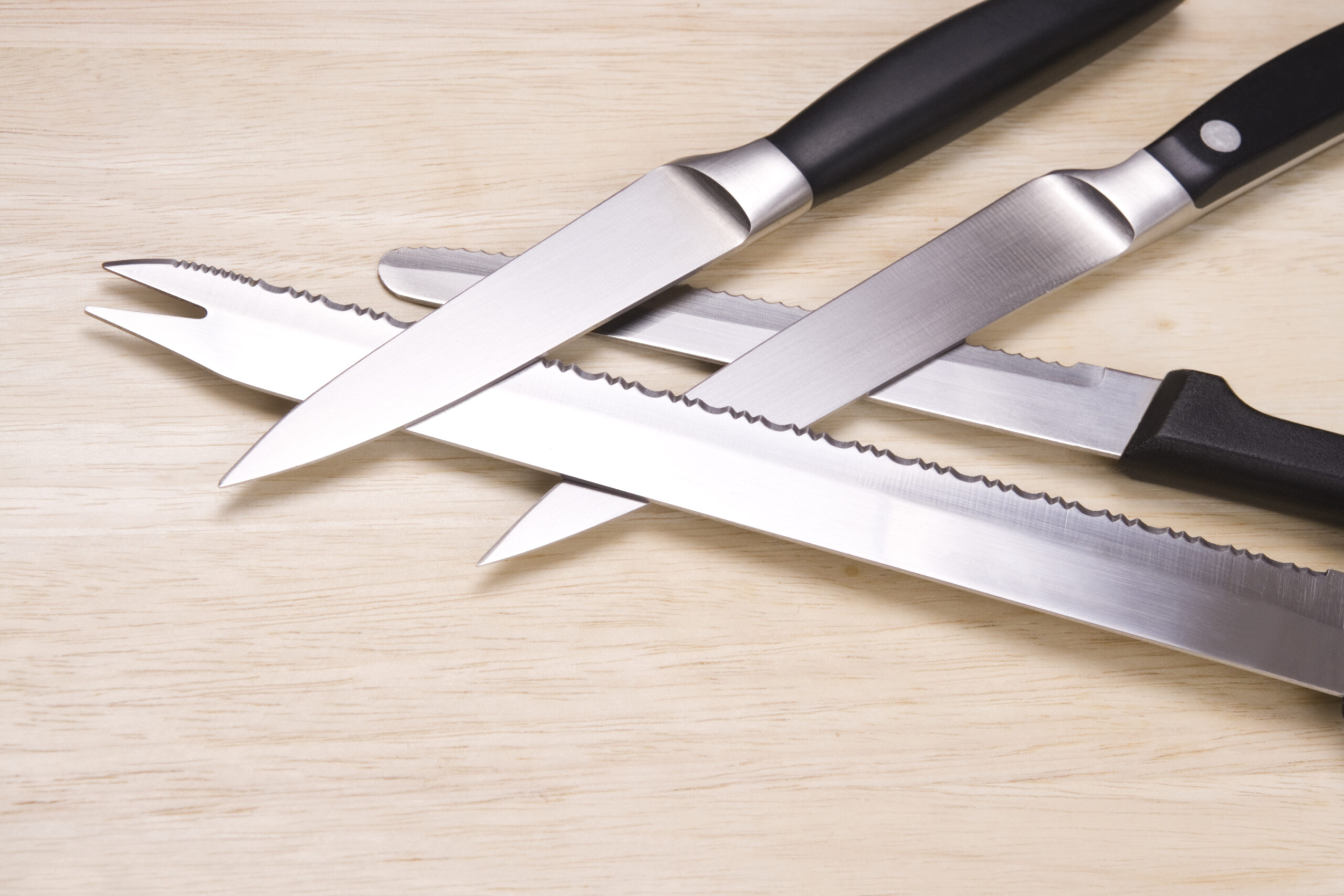
What are serrated knives used for? It’s essential when answering this question to consider the different types of serrated knives, which each have their own purpose.
The most common type of serrated knife is the bread knife. As its name implies, this larger knife is used for cleanly slicing even crusty bread with ease.
There are also smaller serrated knives that are meant to be used for fruits and vegetables. You can also find serrated knives with pointed ends for carving.
Tips for Using a Serrated Knife
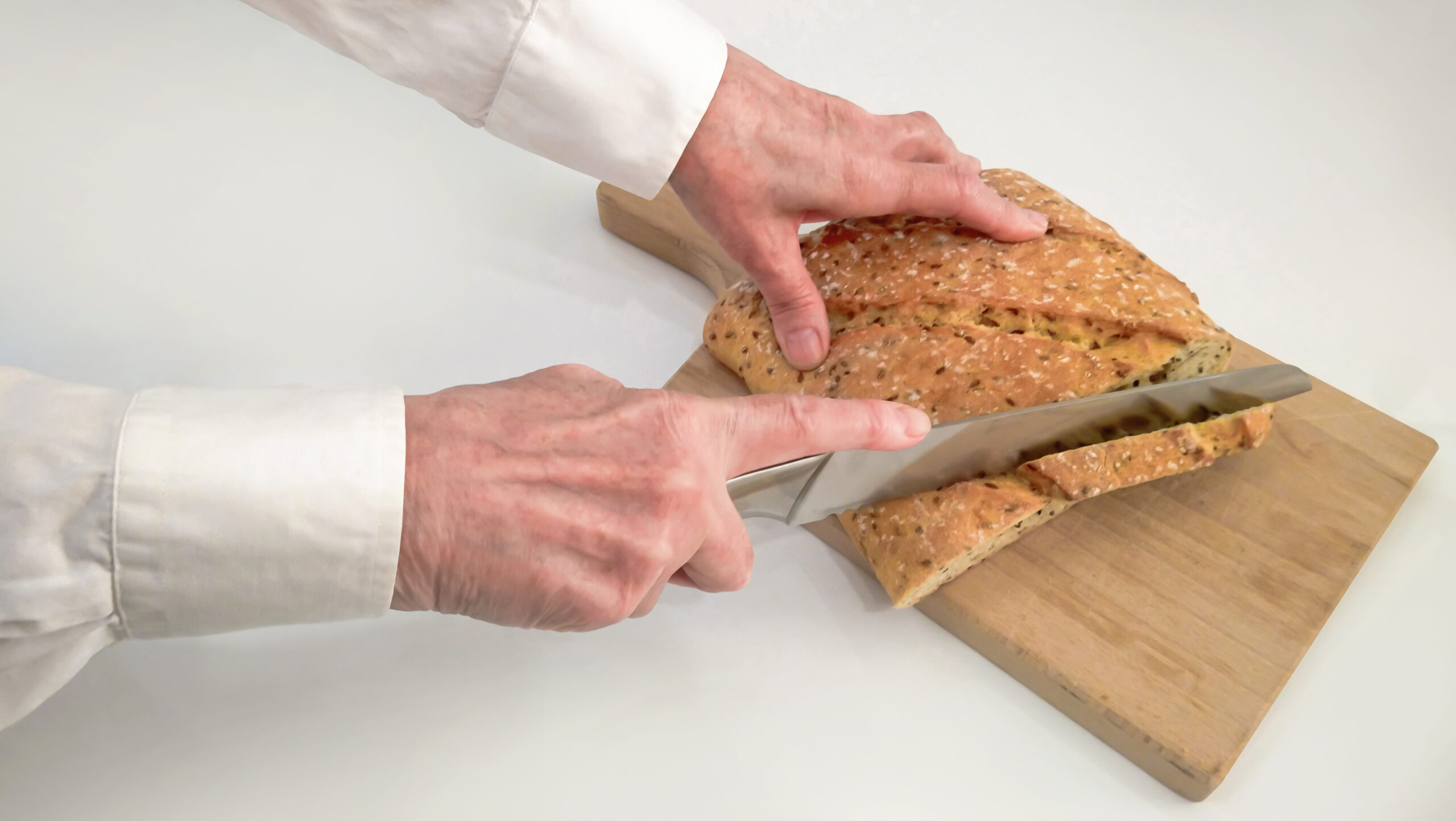
To get the most out of your serrated knife, there are a few tips and tricks to keep in mind. First and foremost is exercising safety precautions.
Make sure the handle of your serrated knife is secure and dry. Just as important, make sure your fingers are never in the path of your knife while cutting.
Serrated knives require less force than straight-edged knives. Apply a gentle downward force while gently sawing your knife back and forth. It’s as simple as that!
How to Choose the Best Serrated Knife
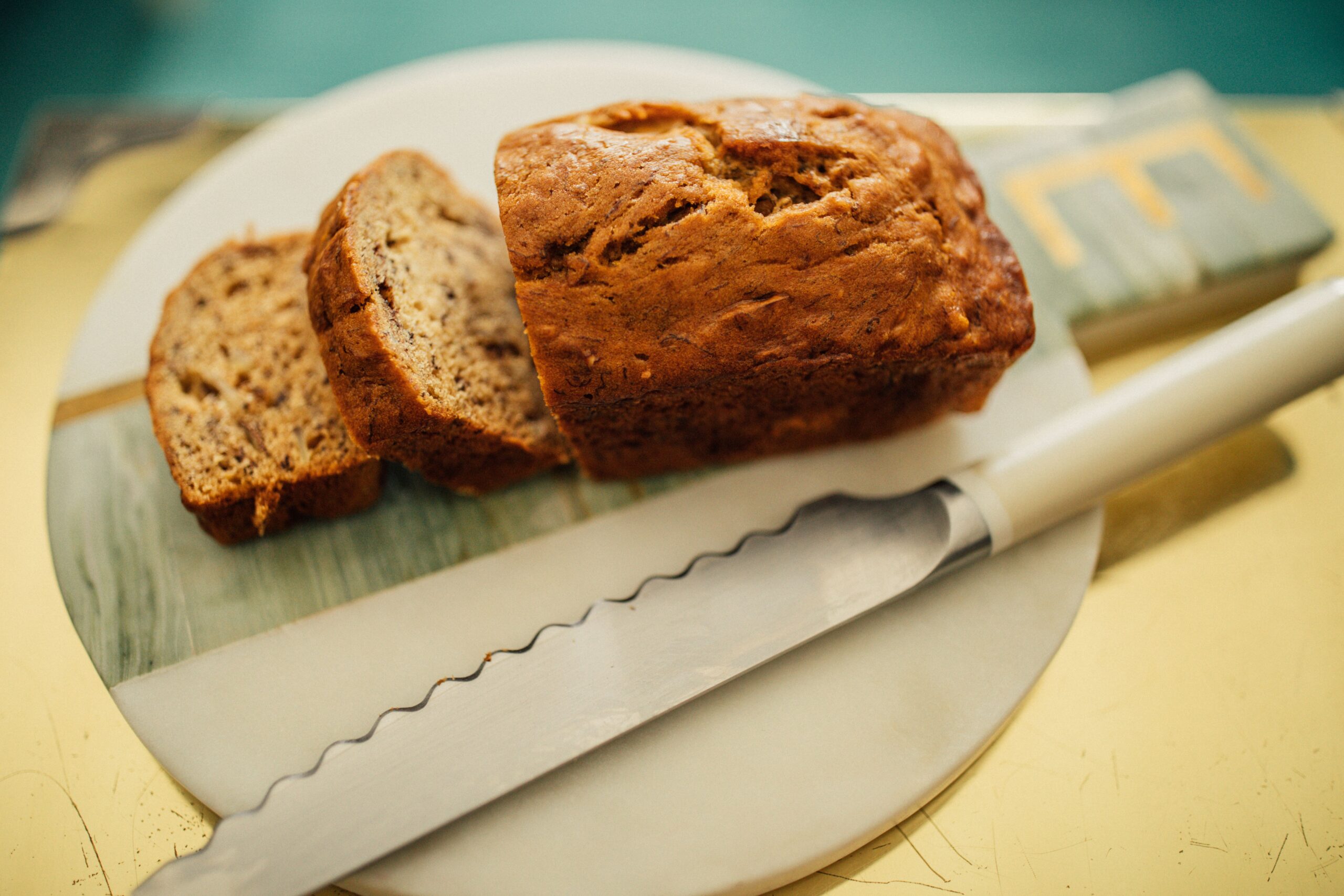
When it comes to selecting the ultimate serrated knife, first consider your culinary needs. A good serrated knife is one that you feel confident using.
Look for a serrated knife with the right teeth-to-length ratio. For bread, go for longer serrations to effortlessly glide through the crispy crust. Shorter serrations work wonders for softer fruits.
Don’t overlook the handle – comfort matters! Opt for an ergonomic grip that feels natural in your hand. Your serrated sidekick should make slicing a breeze.
What Makes Serrated Knives So Useful?
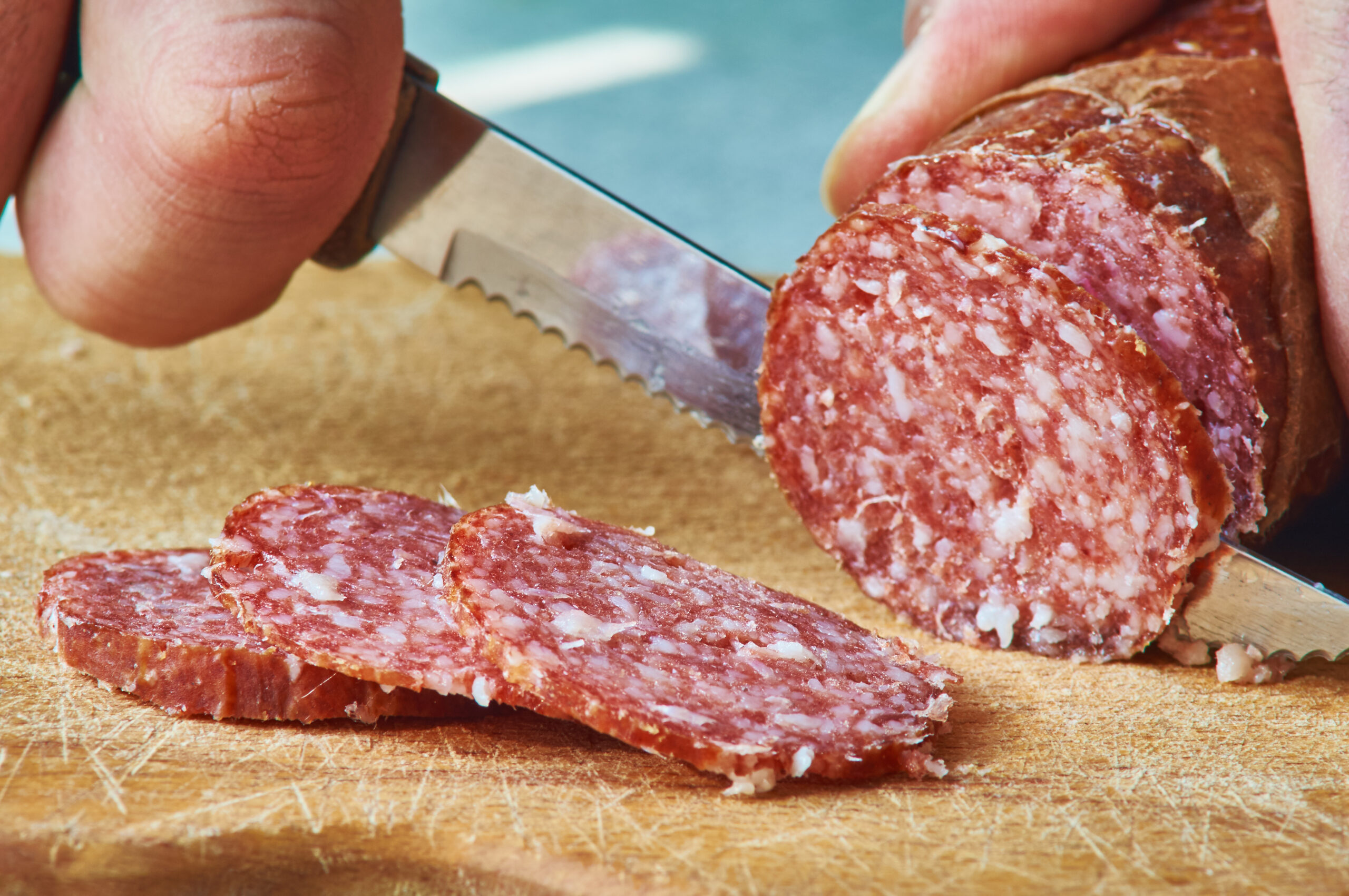
The serrated edge of these knives excels at cutting through foods with tough exteriors and soft interiors, making them perfect for crusty bread, juicy tomatoes, and delicate cakes.
The secret lies in the serrations, which are small, pointed teeth along the blade. This unique design allows serrated knives to grip and saw through surfaces, preventing squashing or tearing.
The result? Clean, precise cuts, whether you’re tackling a baguette or a ripe pineapple. They’re your go-to kitchen companions, effortlessly handling a variety of tasks.
Potential Drawbacks of Serrated Knives
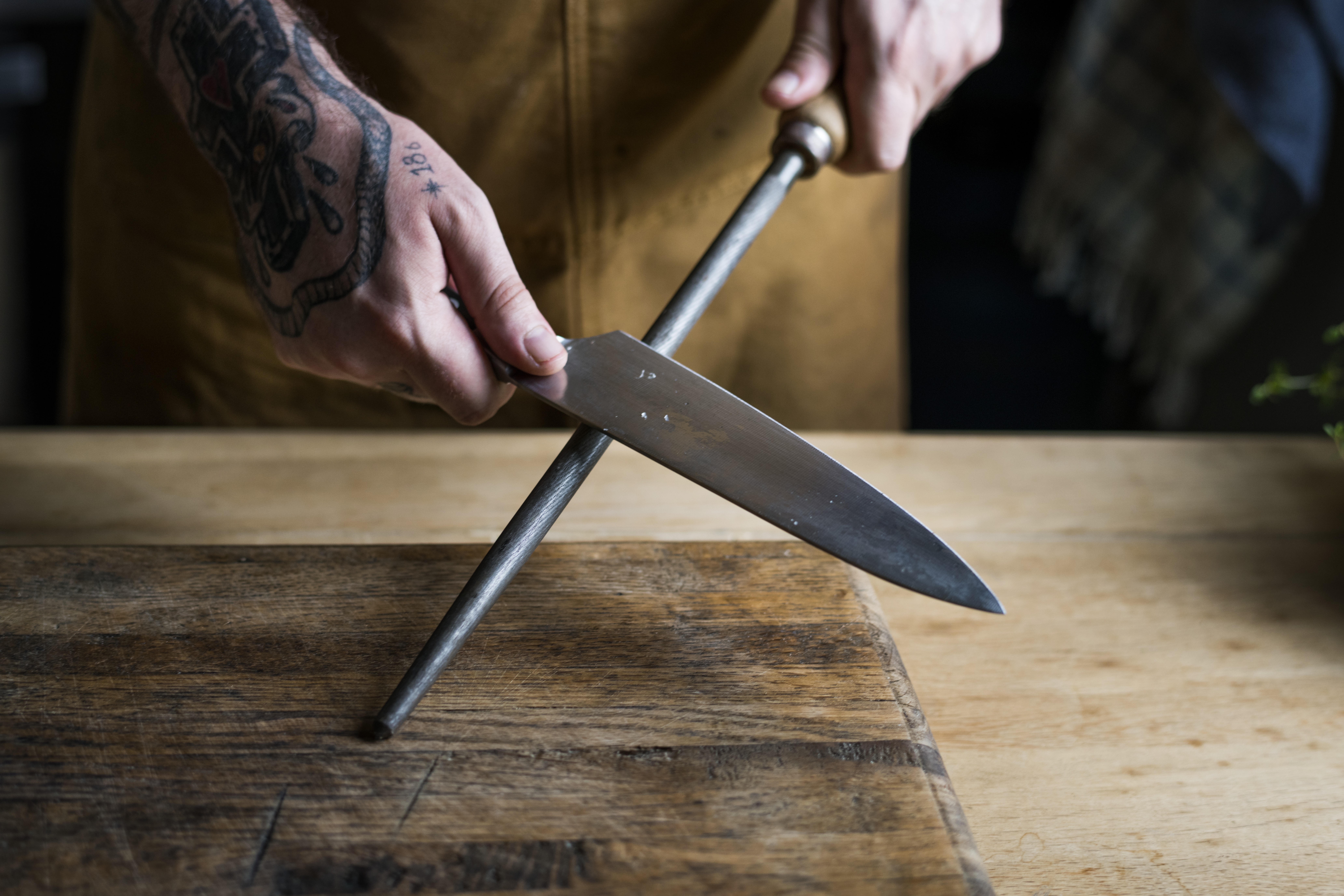
While serrated knives are culinary champions, it’s important to acknowledge their limitations. One drawback is sharpening – the unique edge can be trickier to hone compared to a straight blade.
Serrated knives, with their saw-like design, also may not excel at tasks that demand surgical precision. When intricate slicing is required, a traditional chef’s knife might be a better fit.
Lastly, maintenance matters. Residues from sticky or fibrous foods can sometimes lodge between the serrations. Regular cleaning is key to keeping your serrated knife in top-notch condition.
Do Professional Chefs Use Serrated Knives?
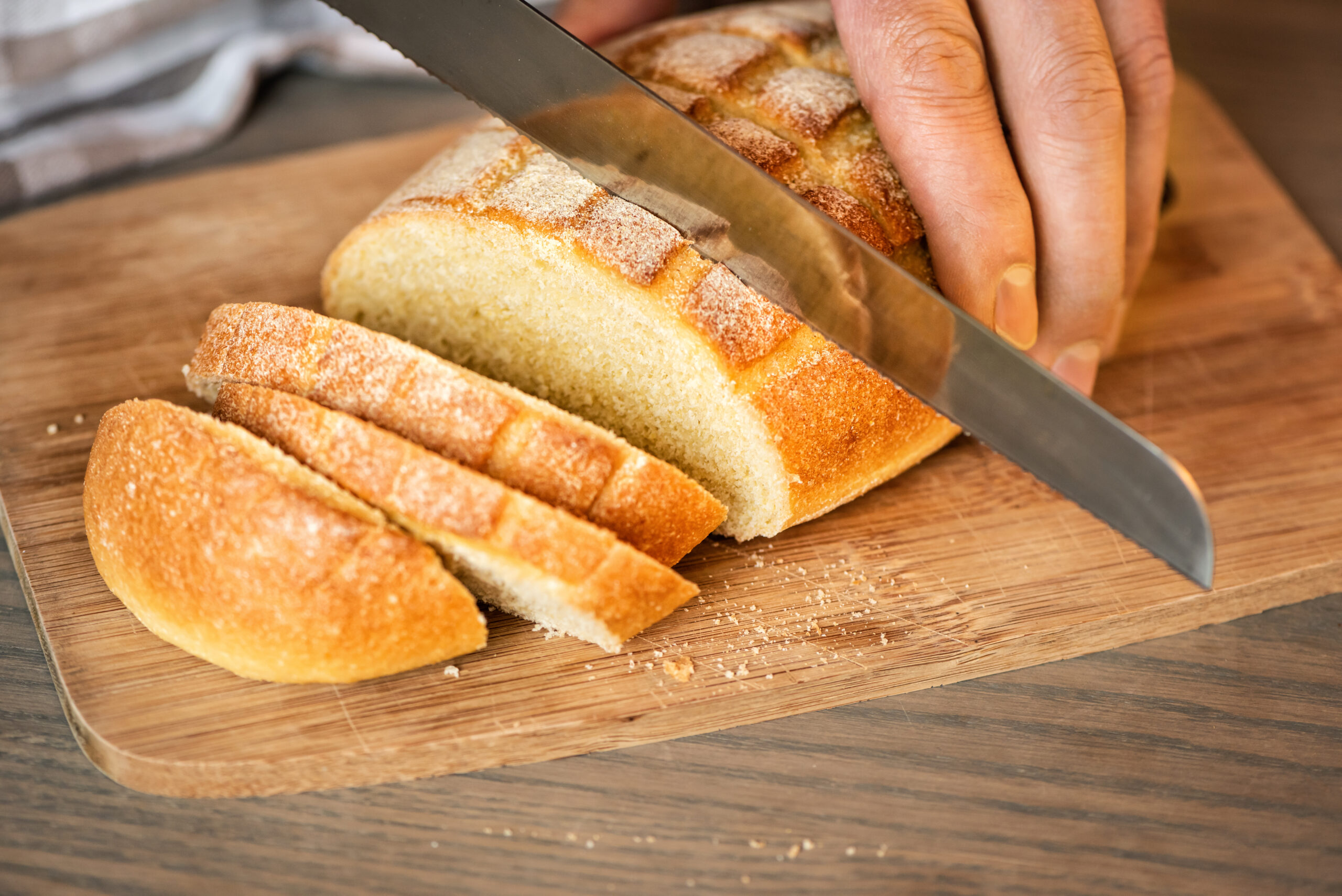
Ever wondered if professional chefs use serrated knives? The answer: absolutely! In bustling kitchens, these knives shine, perfect for precision in slicing baguettes and handling ripe tomatoes.
Their unique design ensures efficient cuts without compromising texture. However, chefs maintain diverse knife collections, with serrated knives sharing the stage with other specialized blades.
So, when you witness a chef at work, observe the carefully curated ensemble. Serrated knives may just make a cameo for tough slices and texture preservation.
Can You Sharpen Serrated Knives?
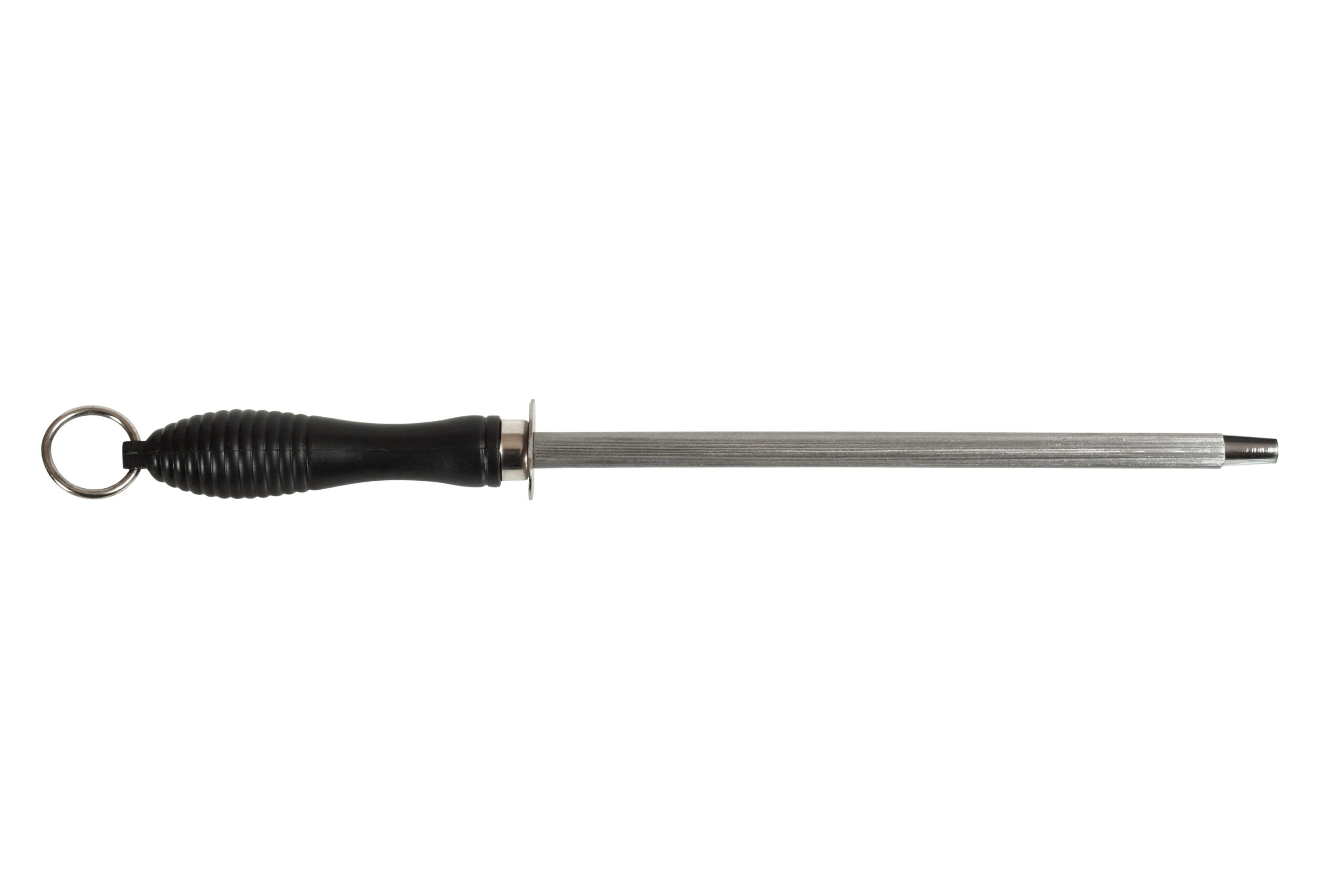
The answer to the burning question of whether you can sharpen serrated knives is a bit nuanced. Traditional sharpening methods won’t work due to the serrated edge’s unique design.
Instead, specialized tools like tapered diamond rods or ceramic sharpeners are needed to sharpen a serrated blade. You’ll need to carefully hone each serration, maintaining the original bevel.
While it may require more finesse, keeping your serrated knives sharp ensures they remain reliable kitchen companions. And if you’re ever in doubt, a professional cutler is your best ally.

